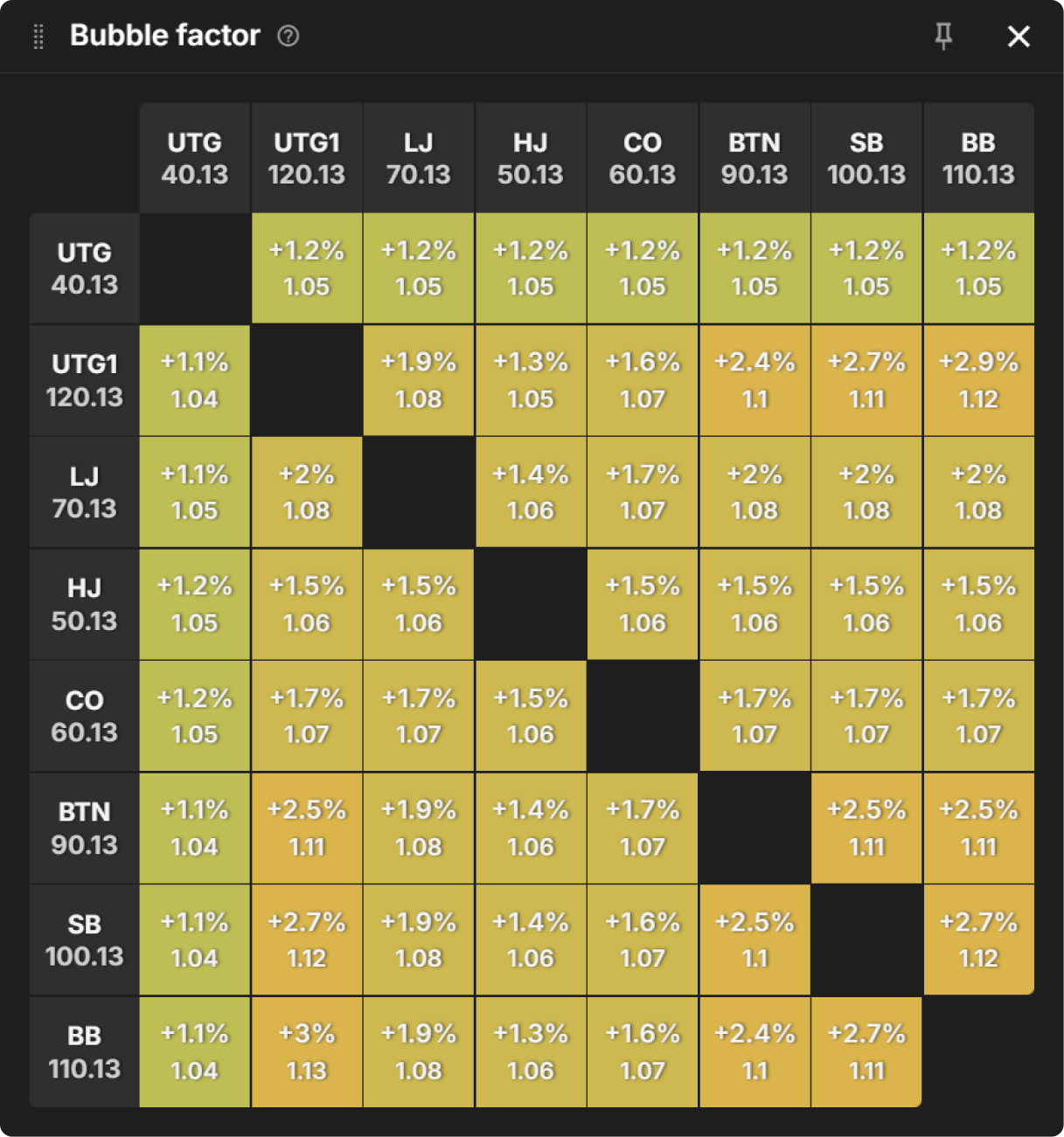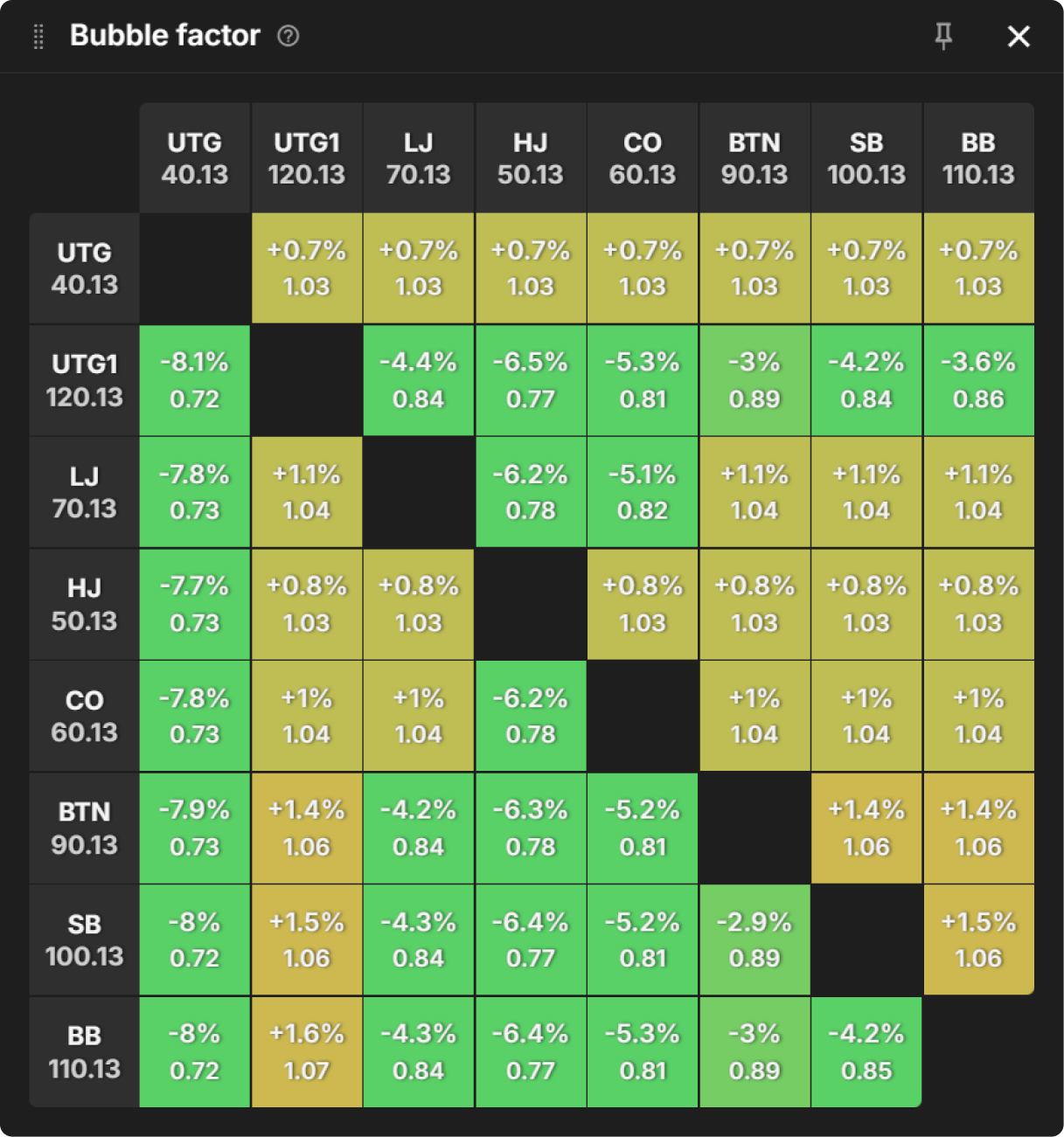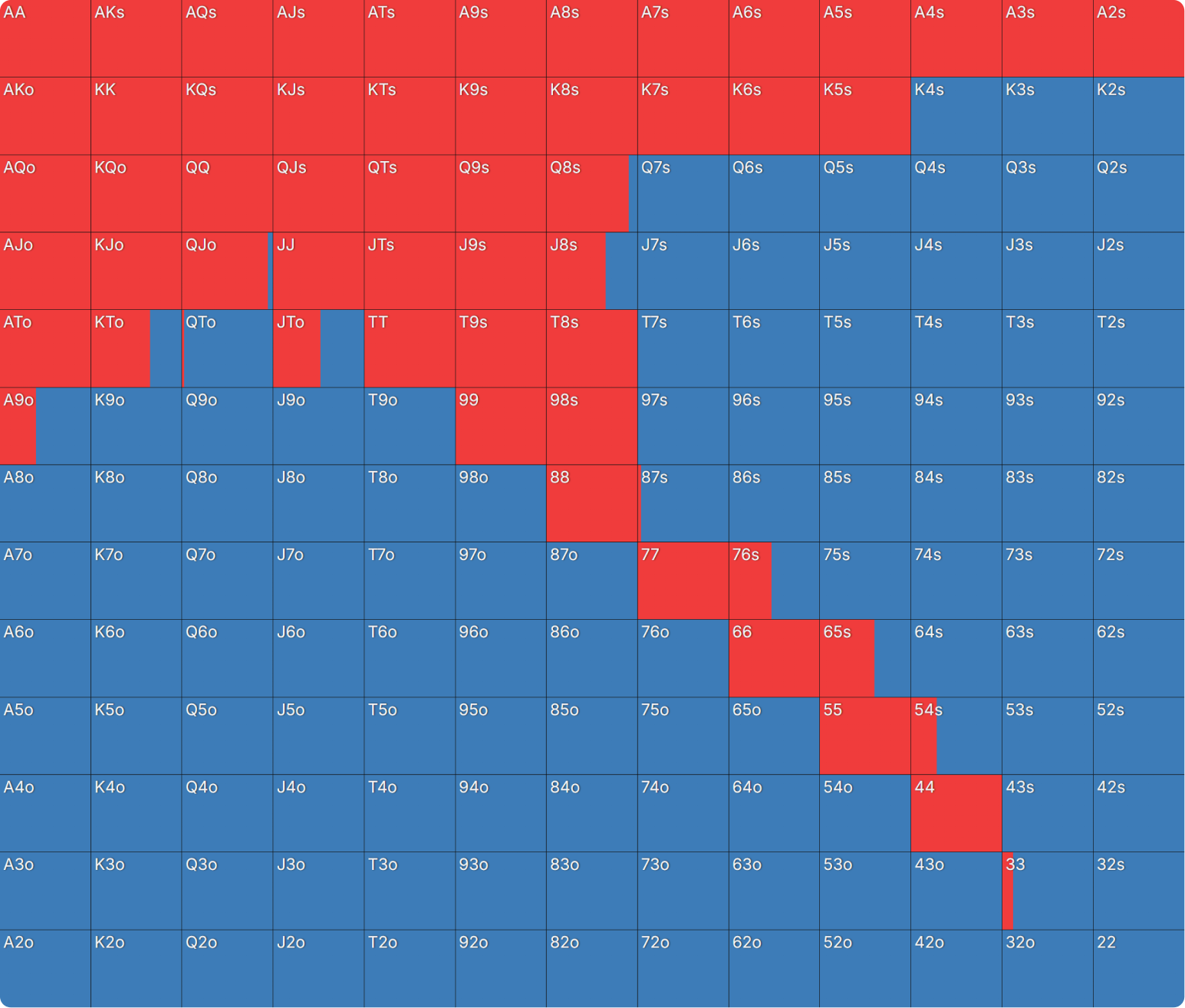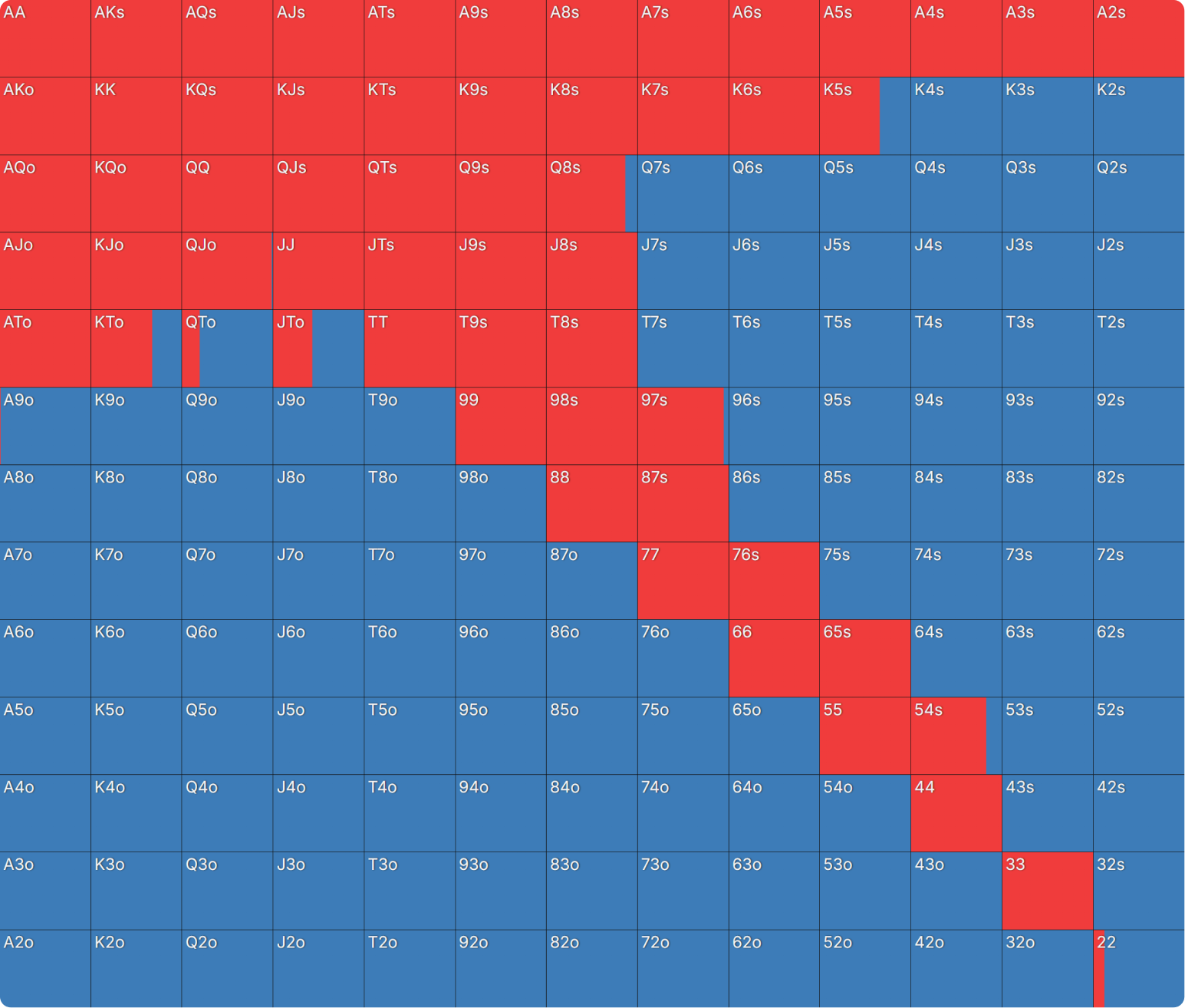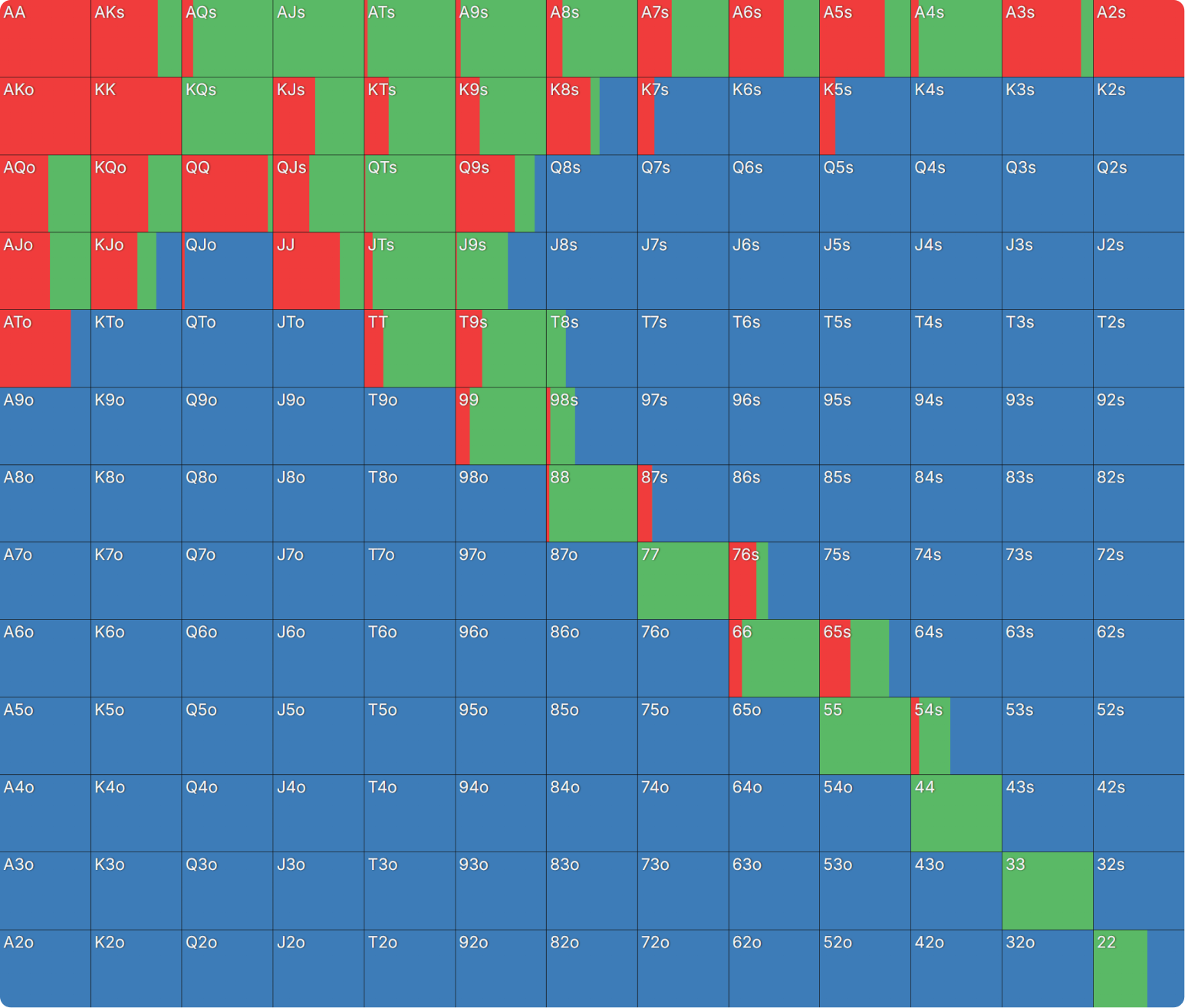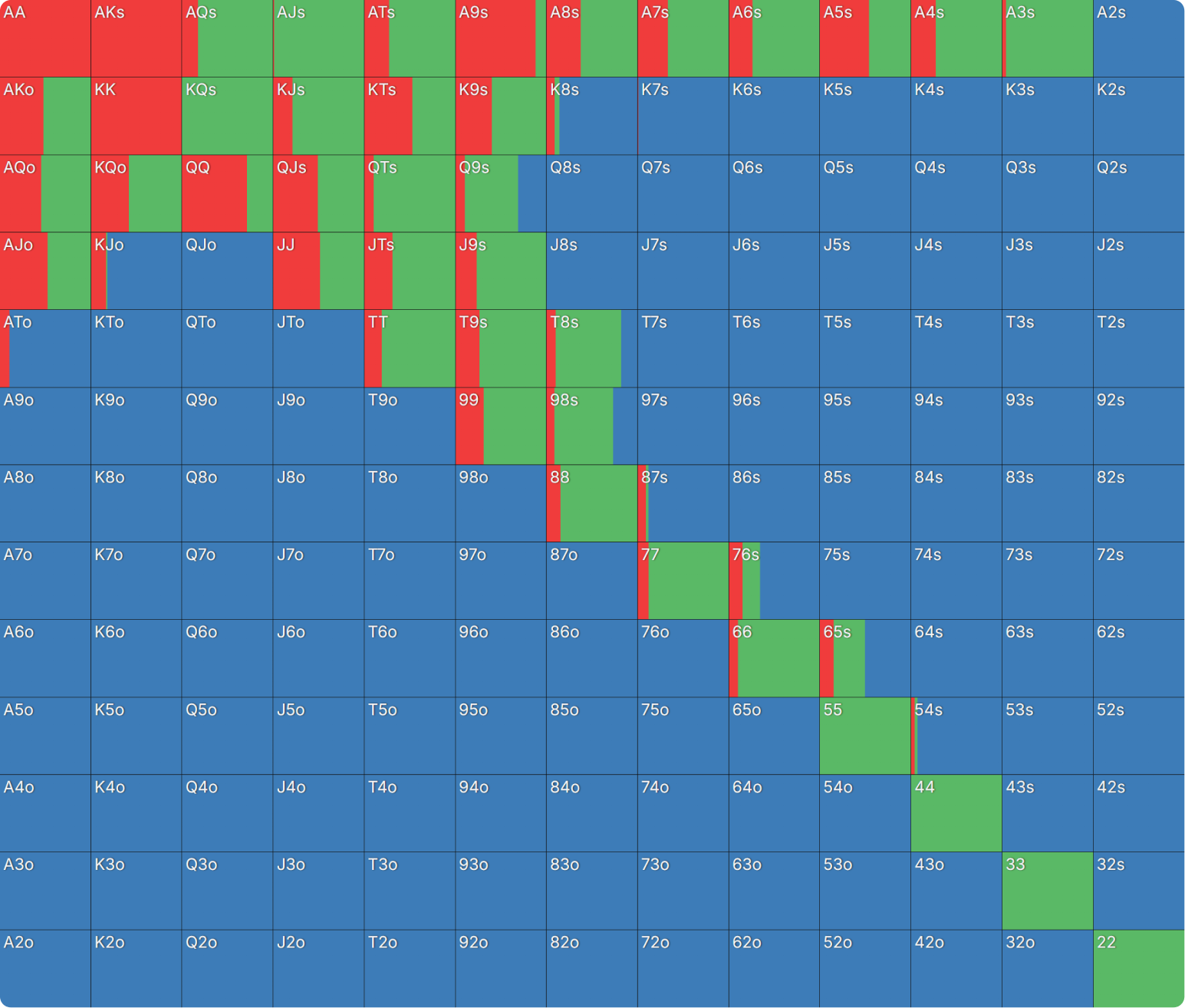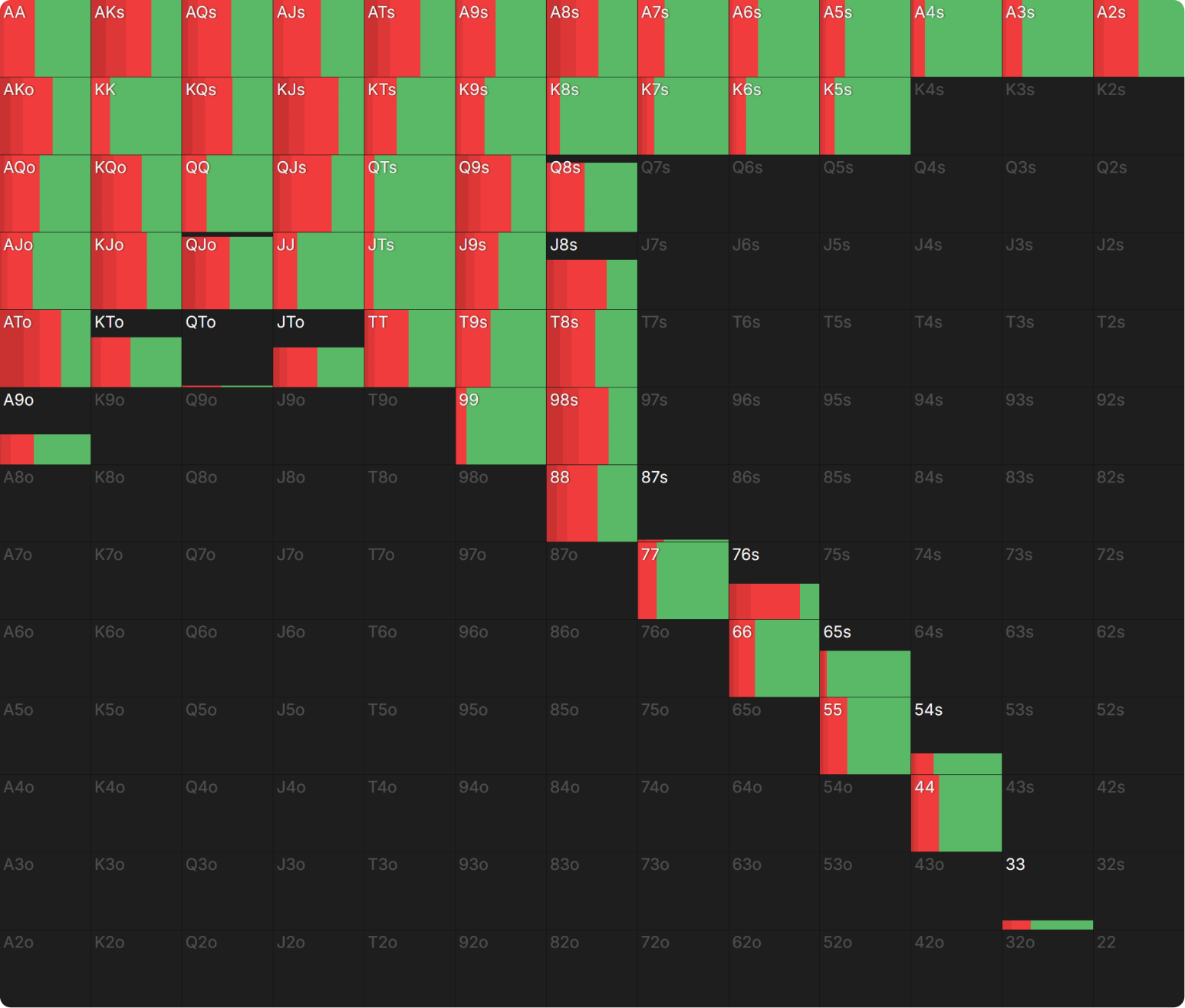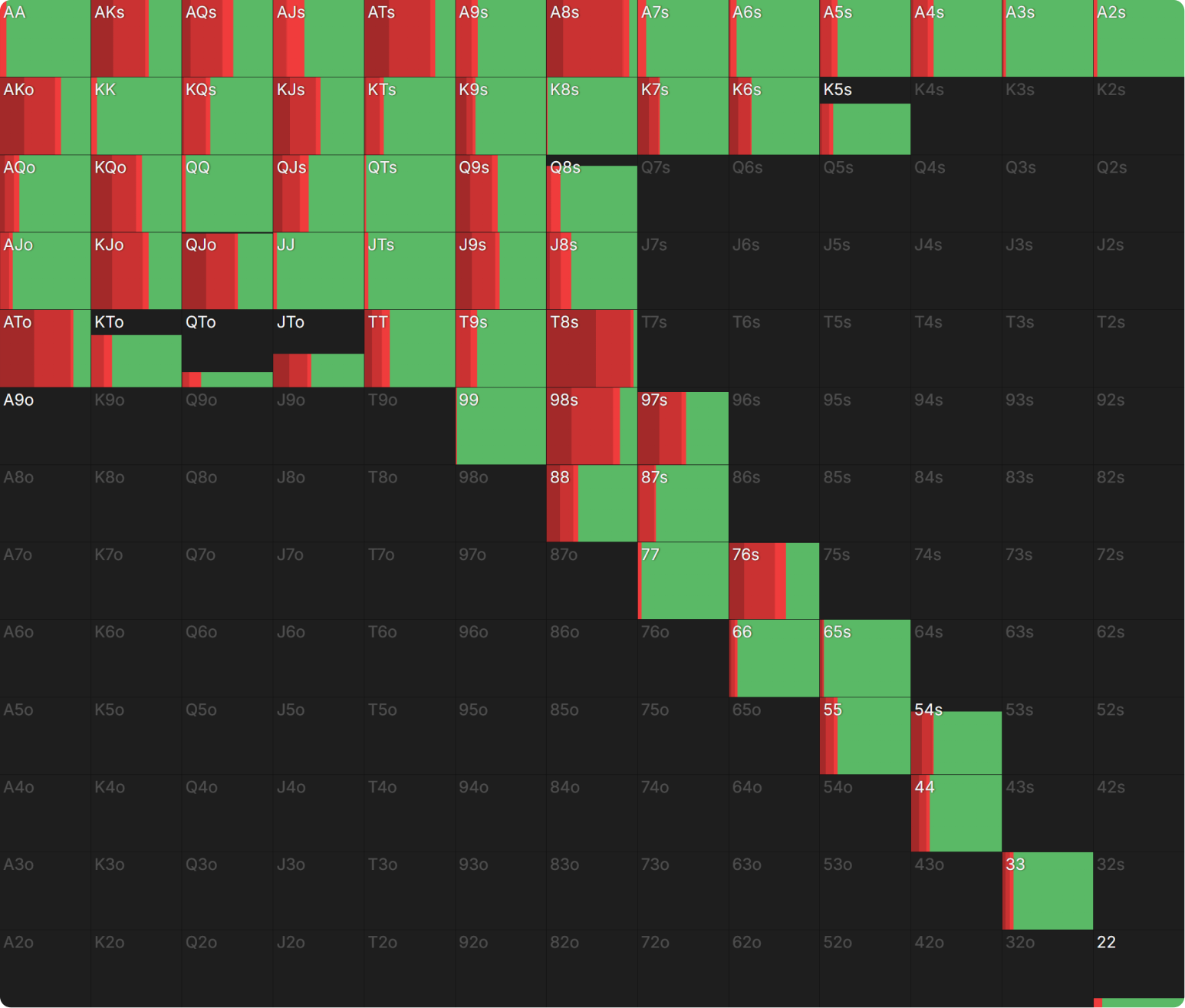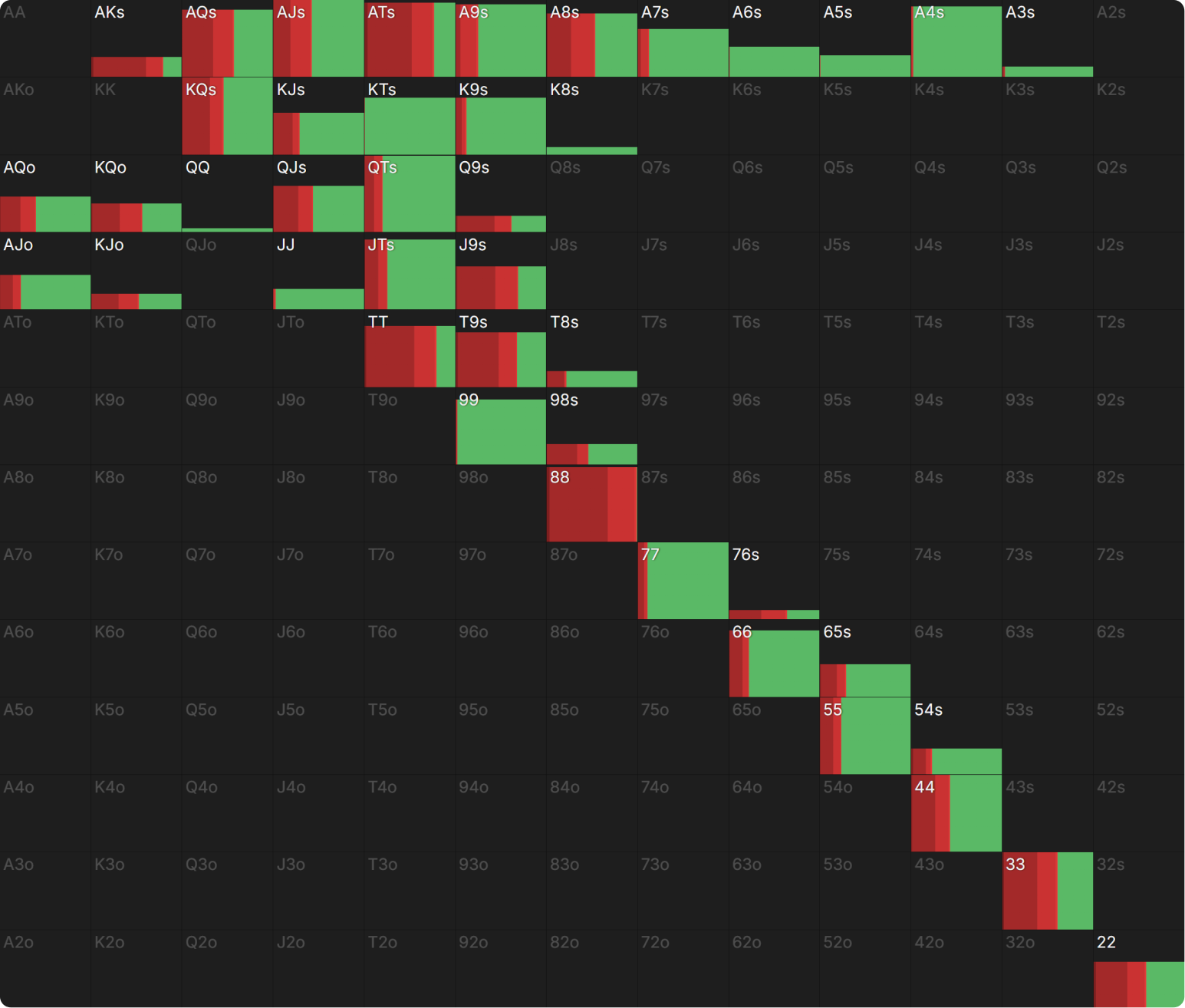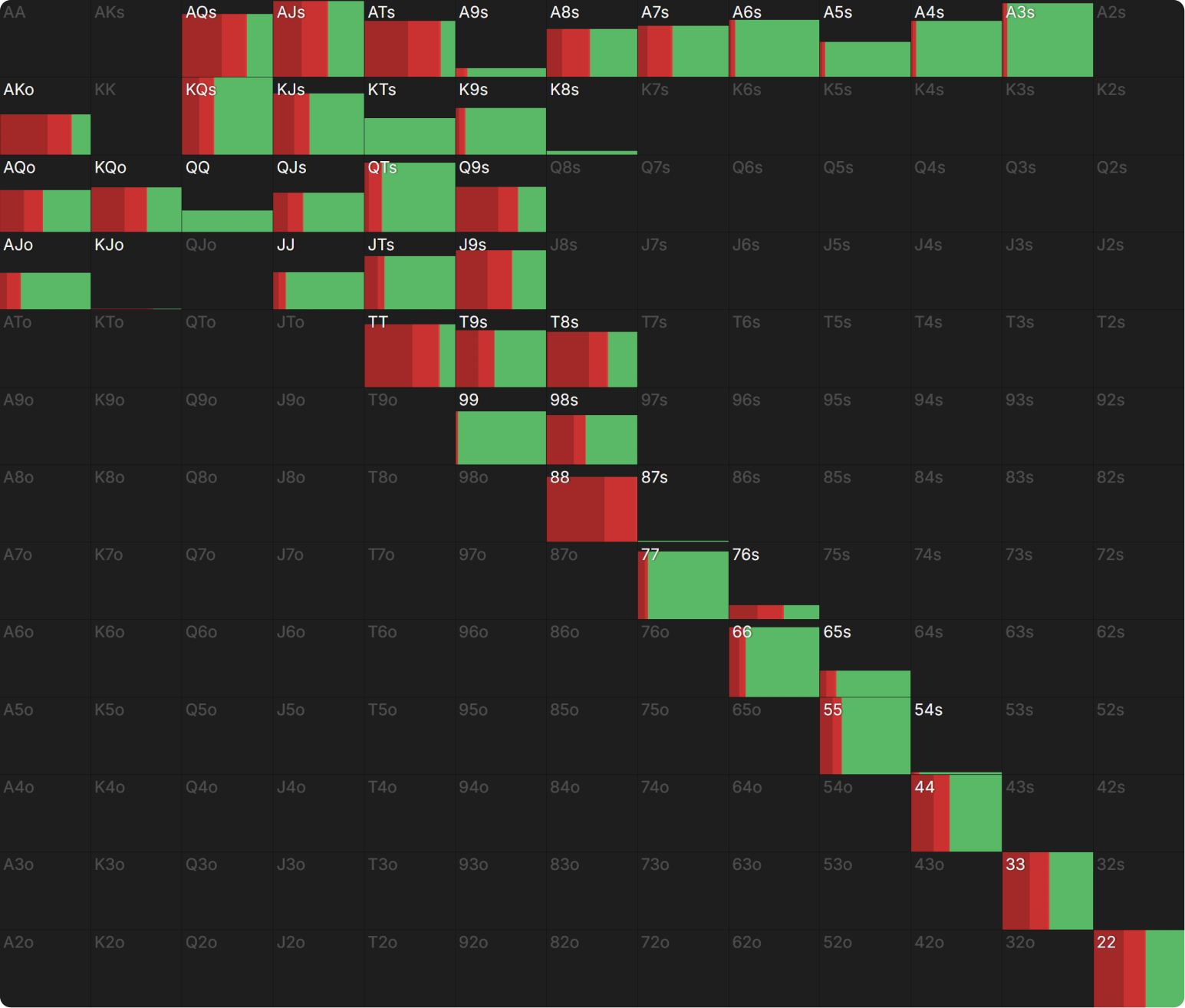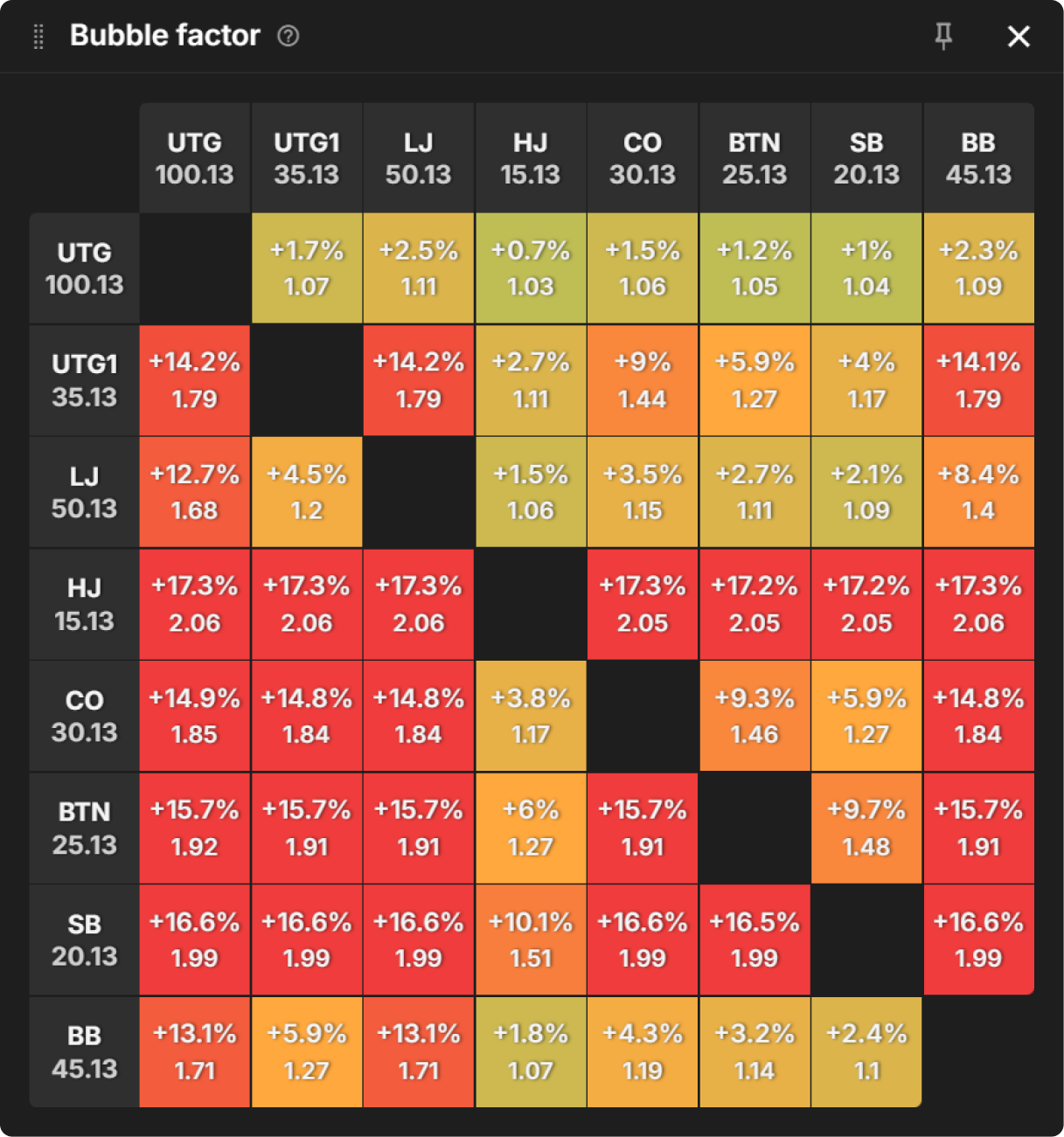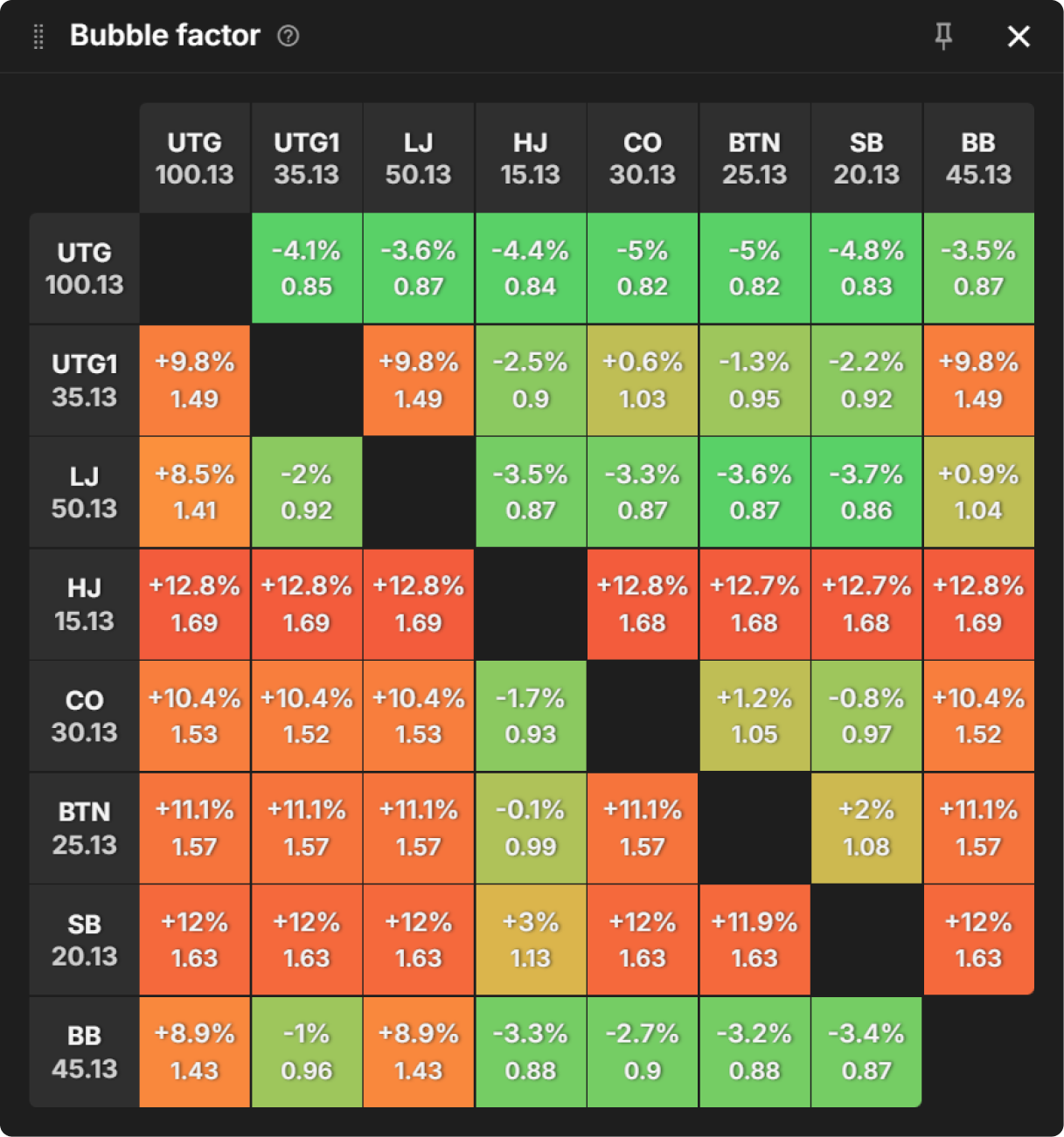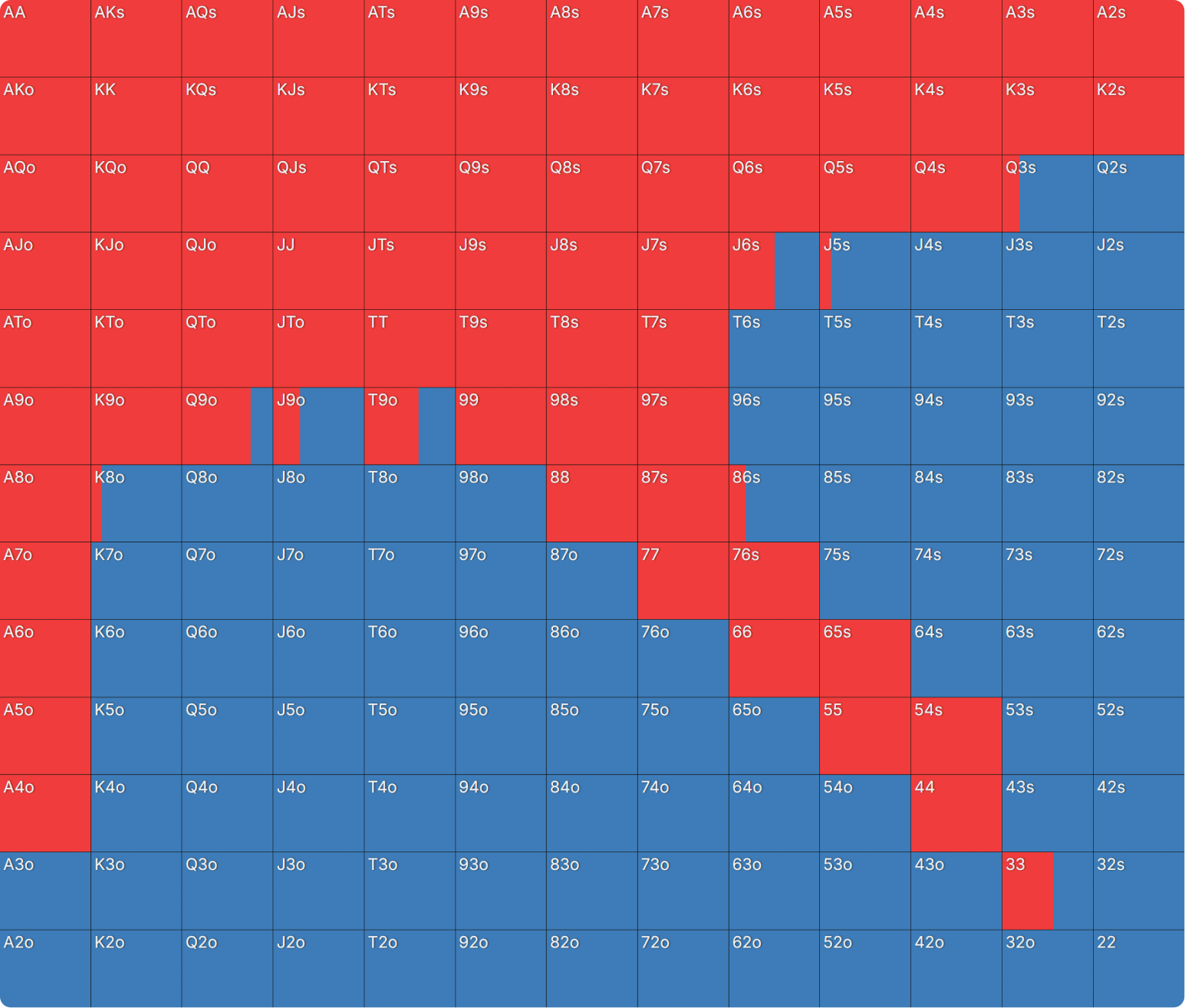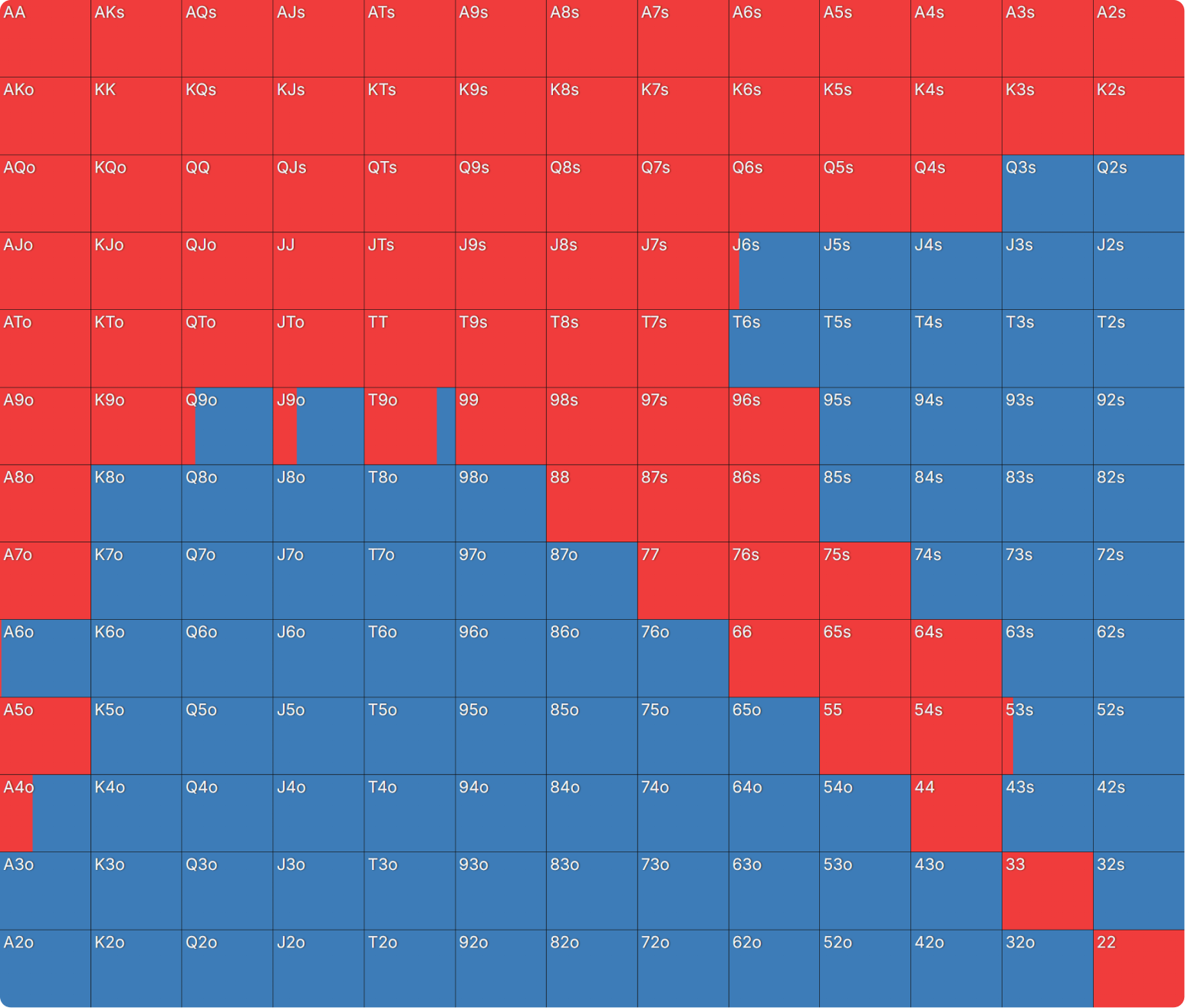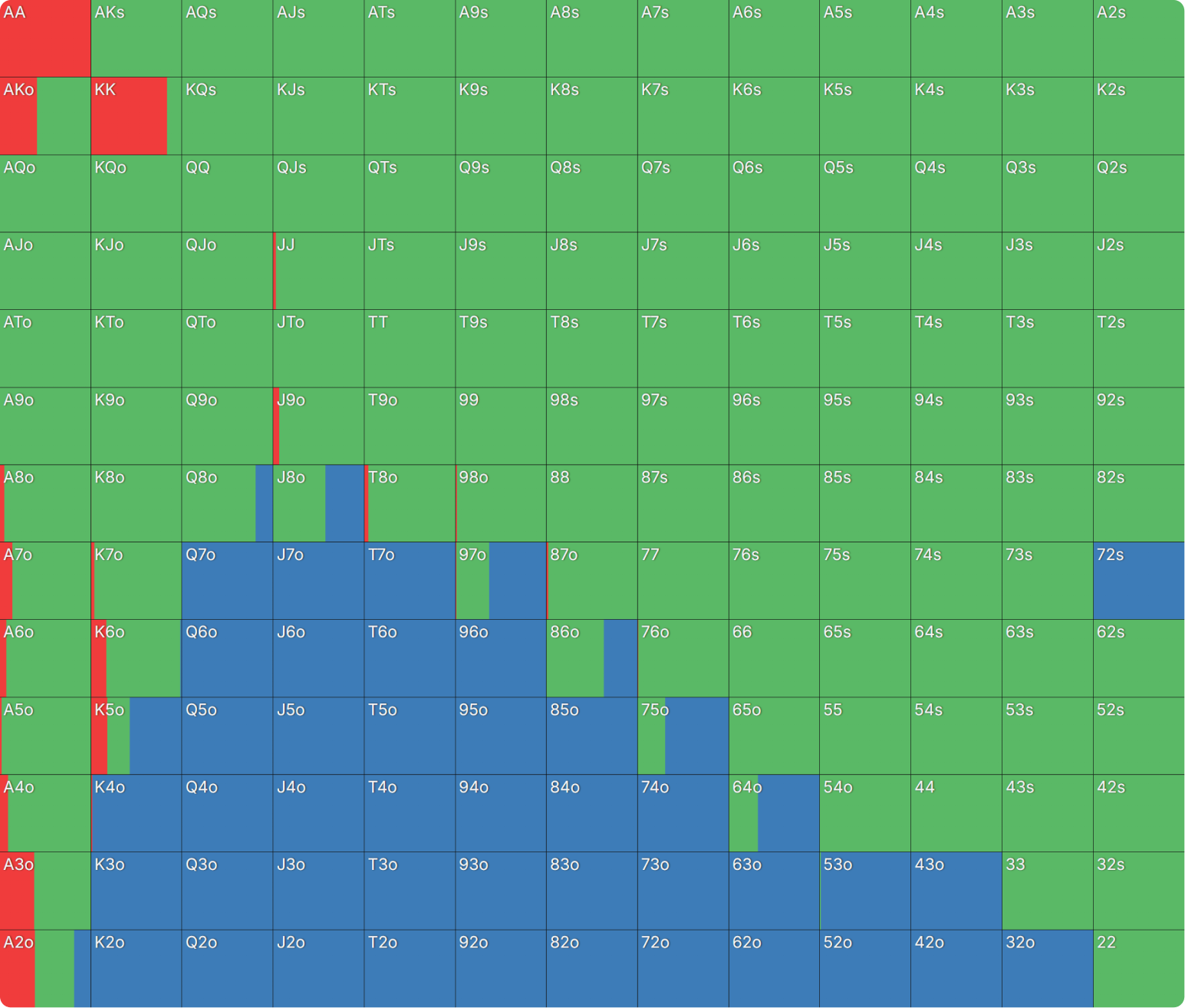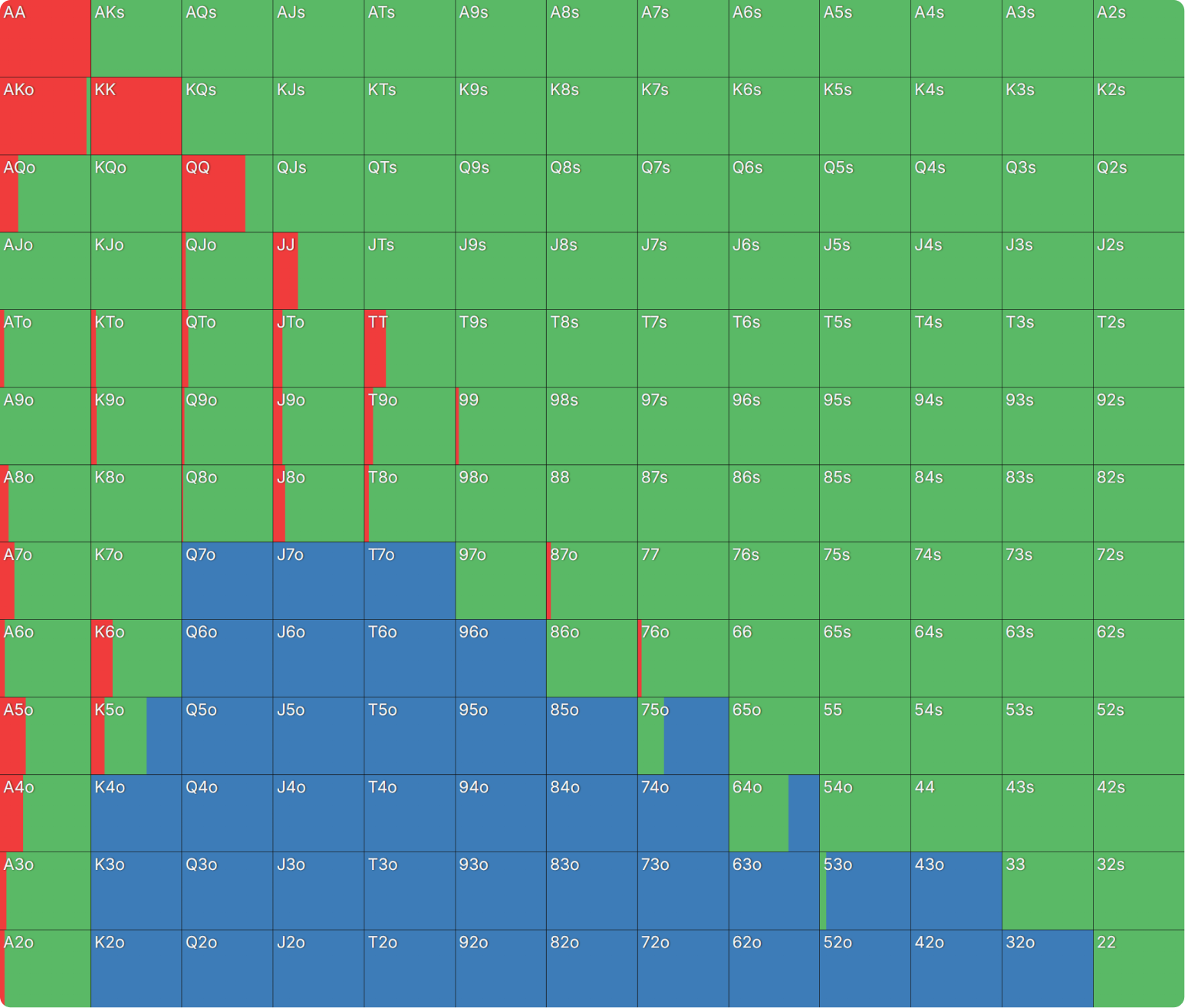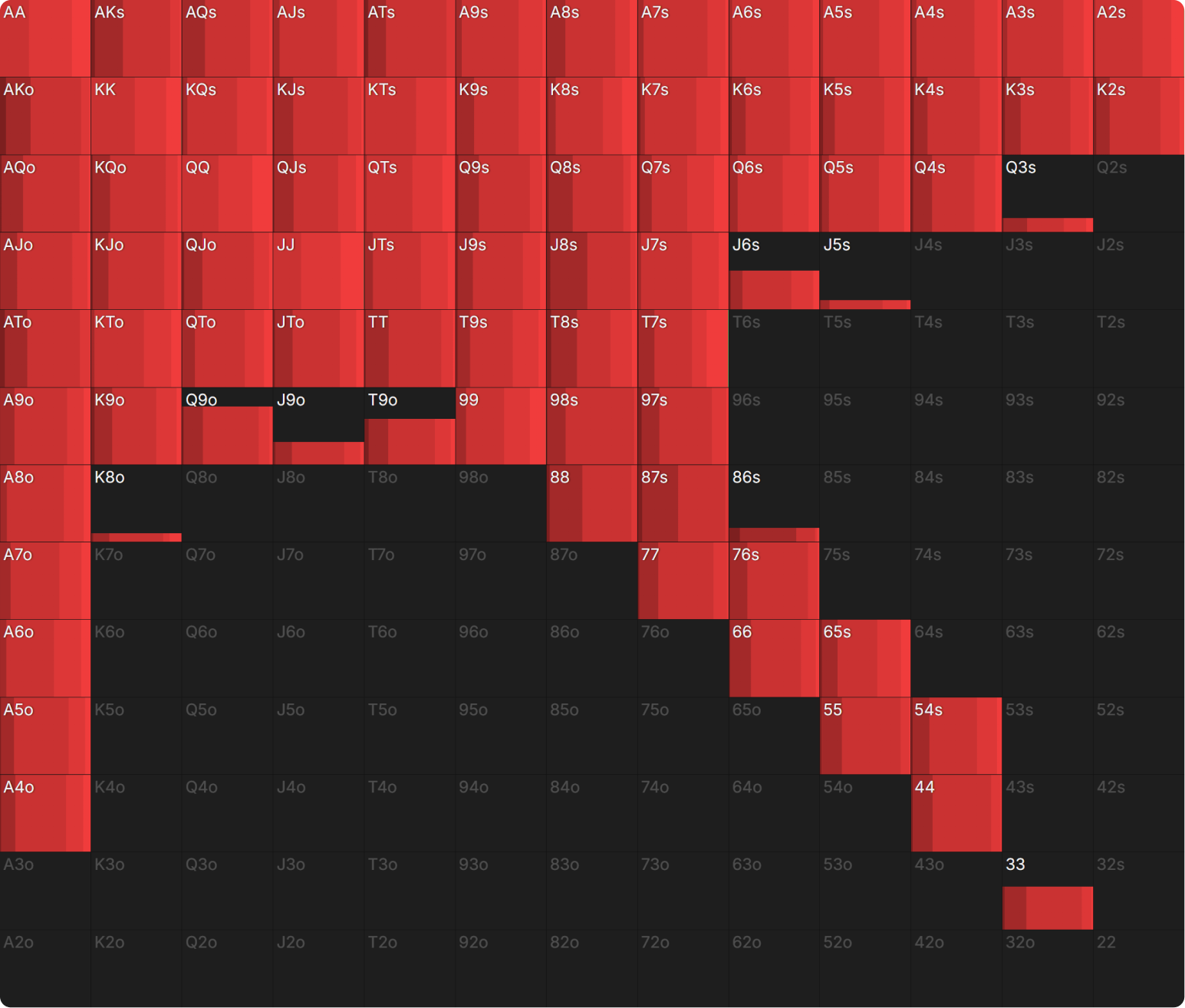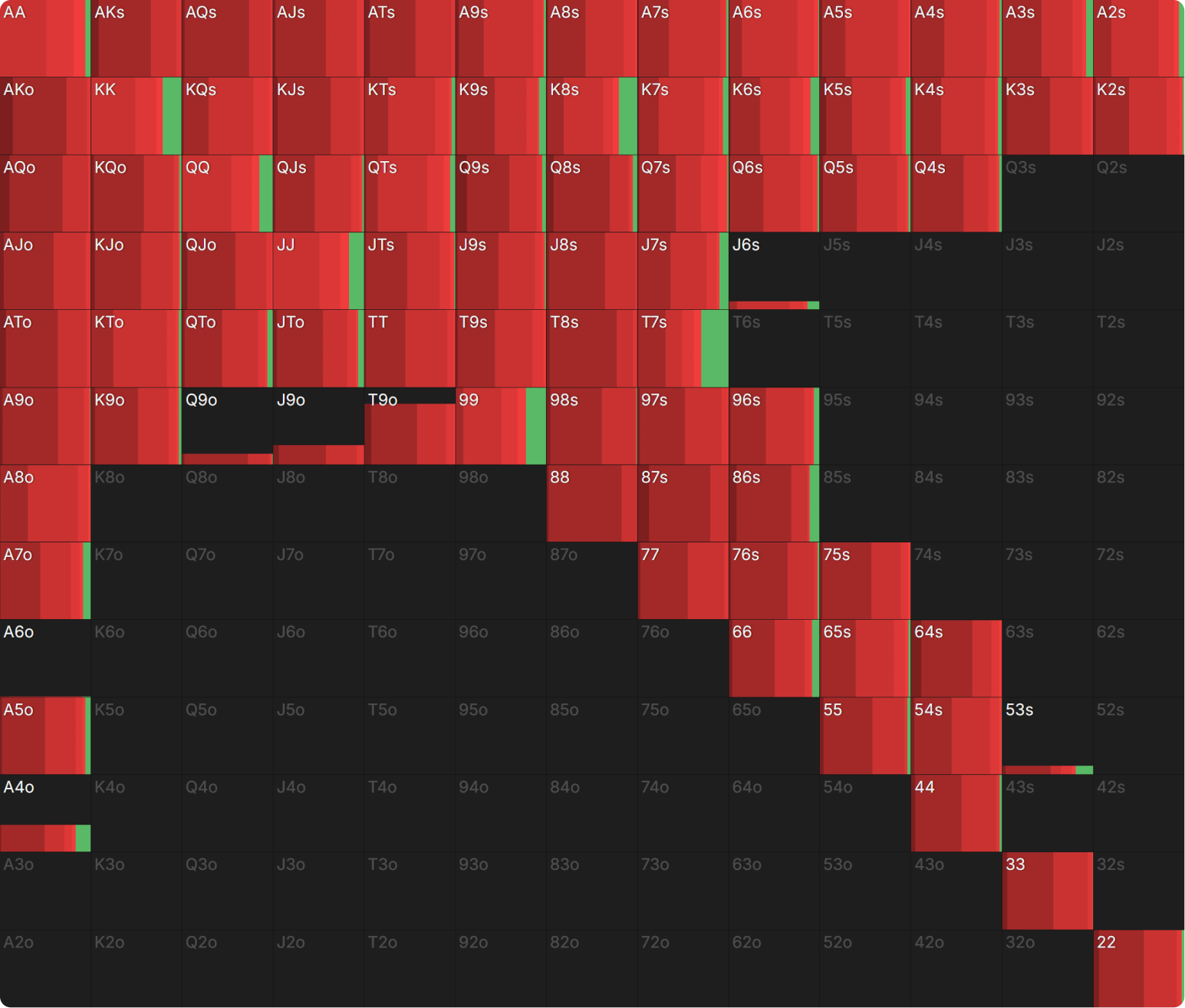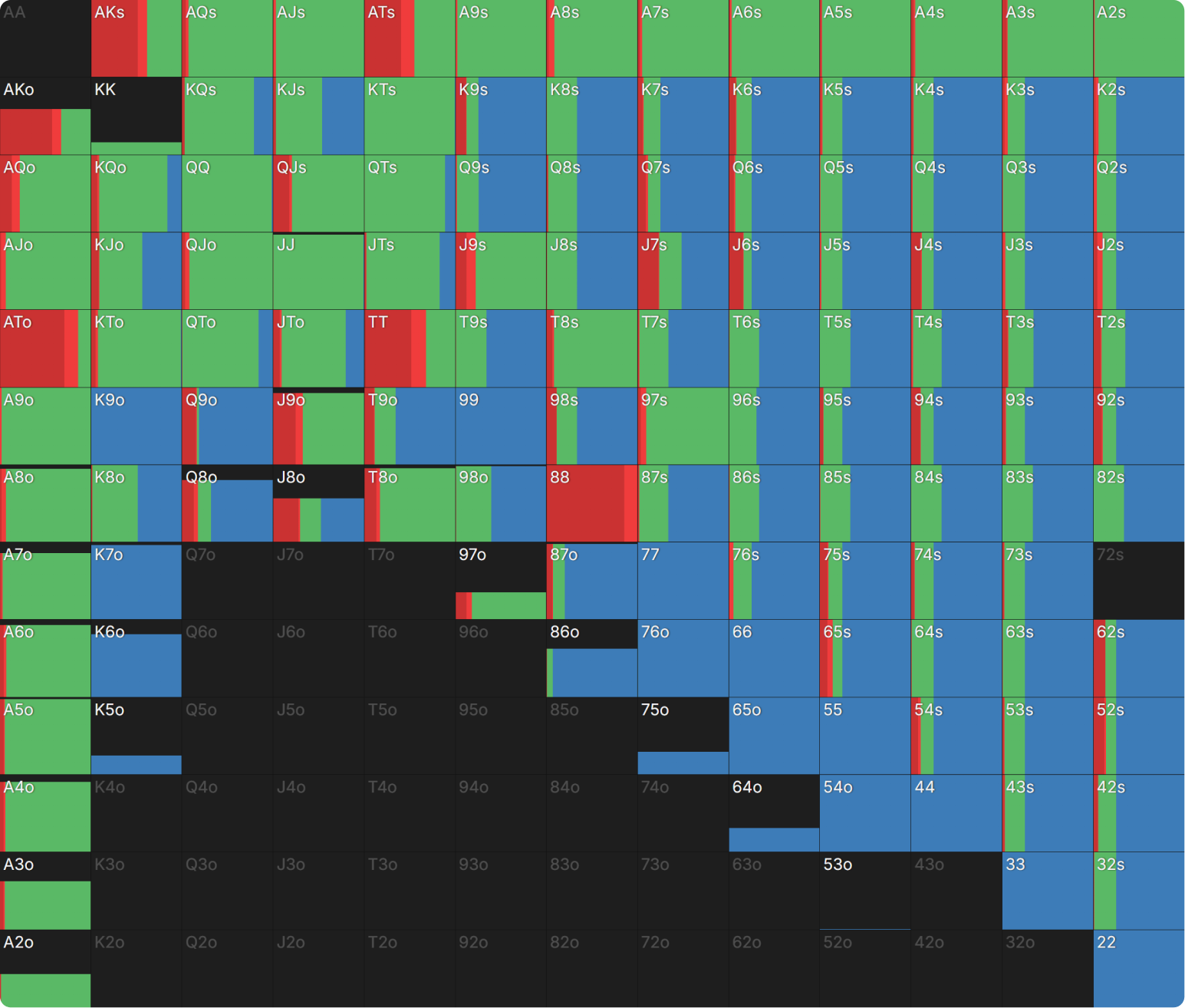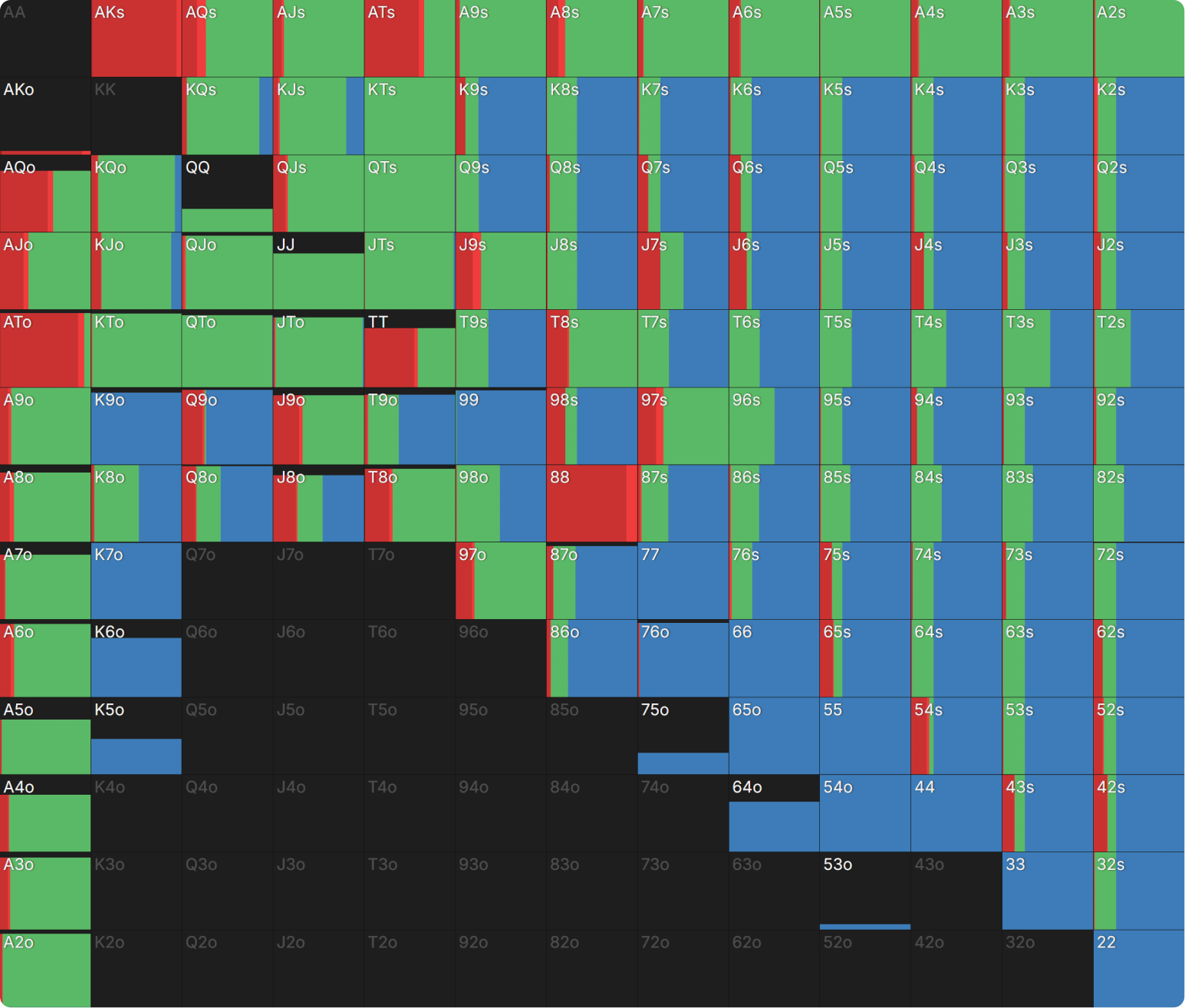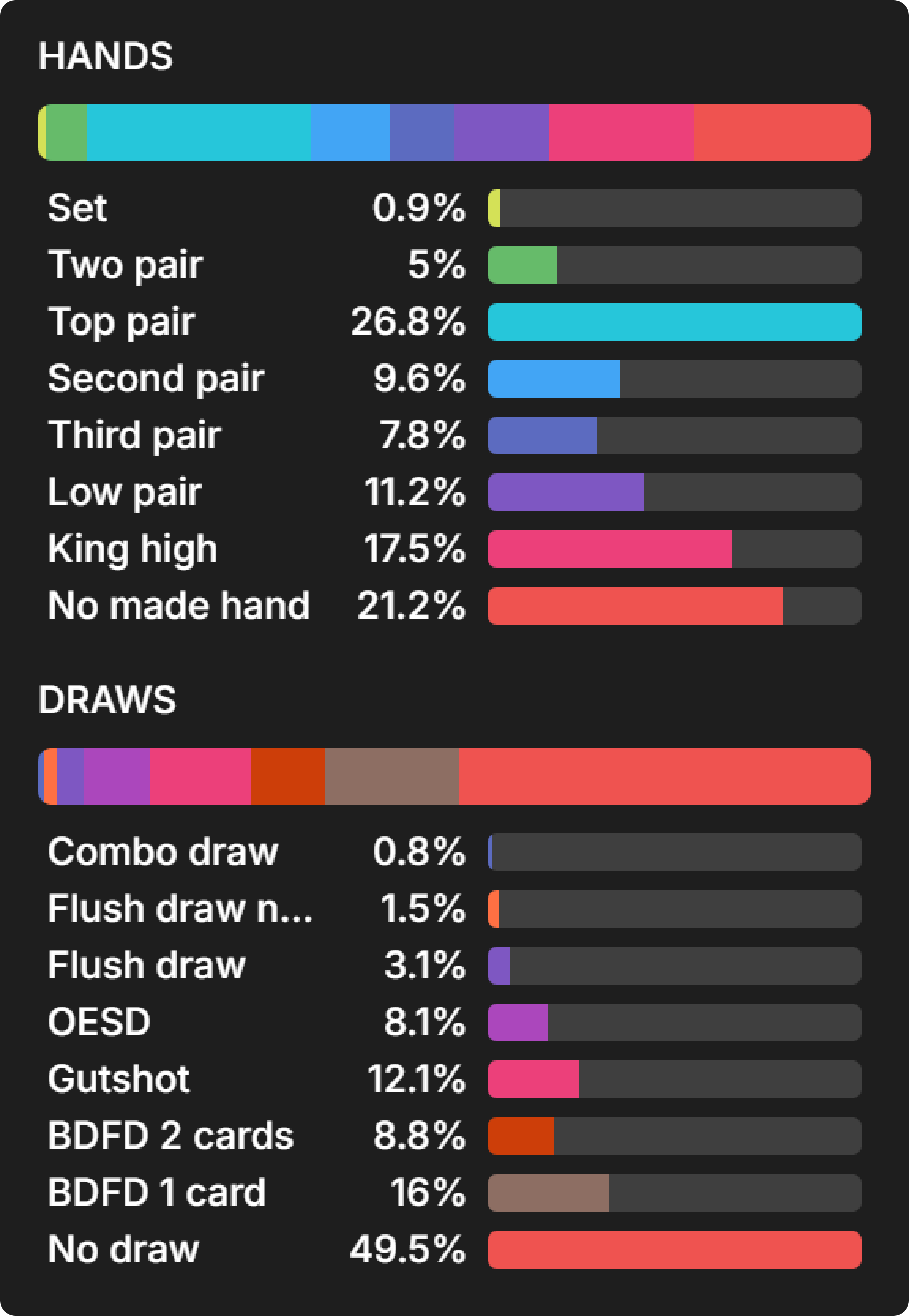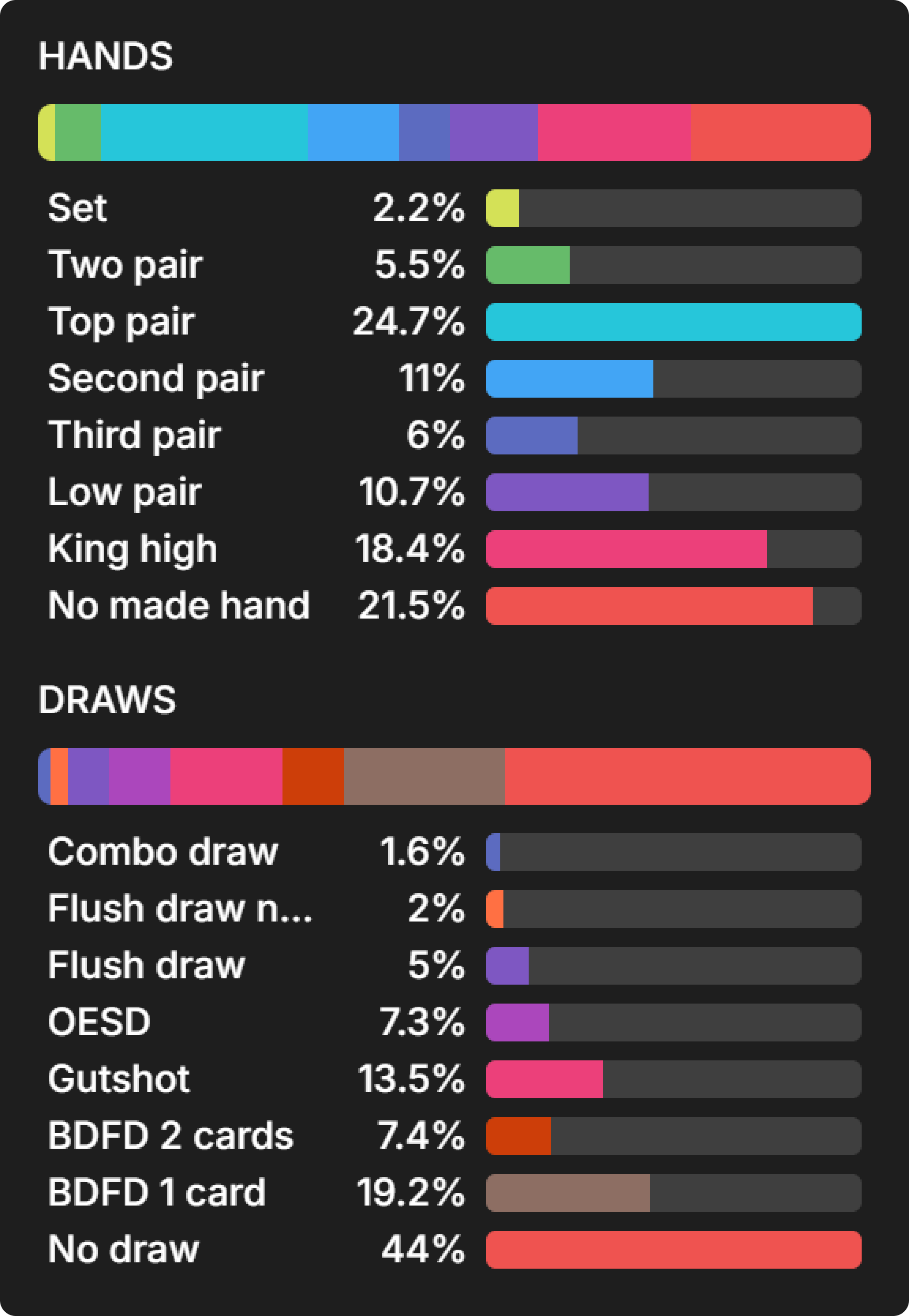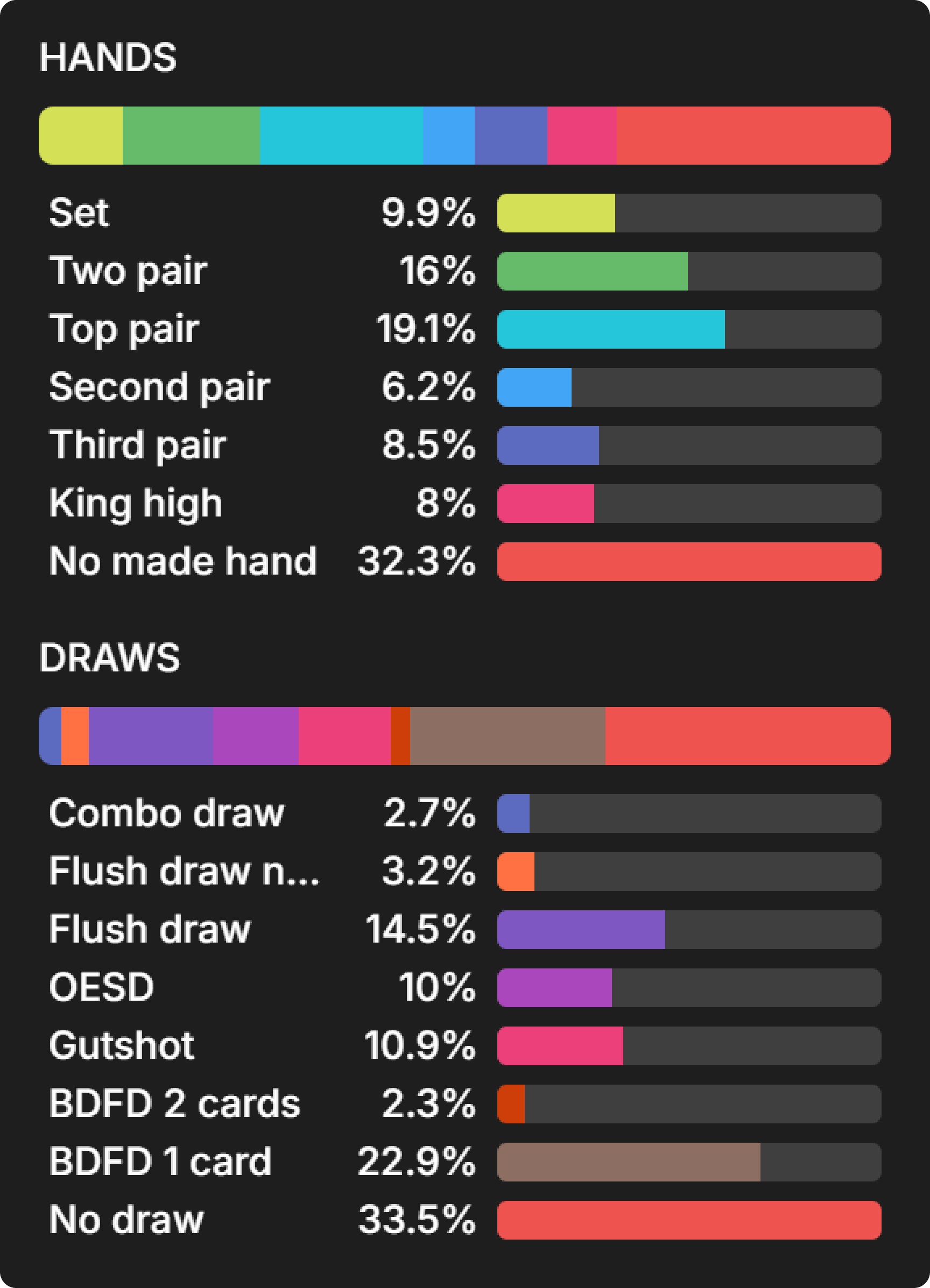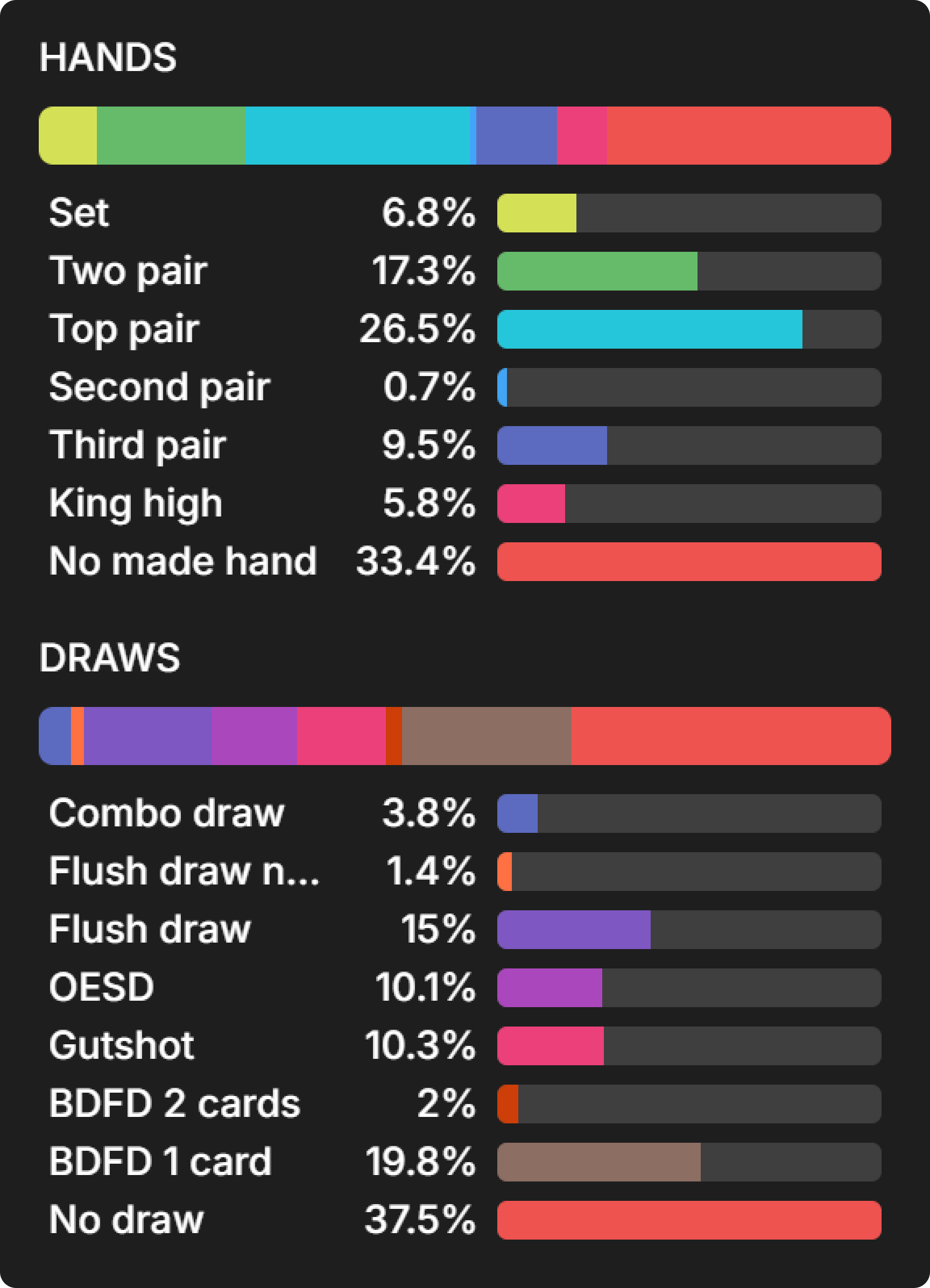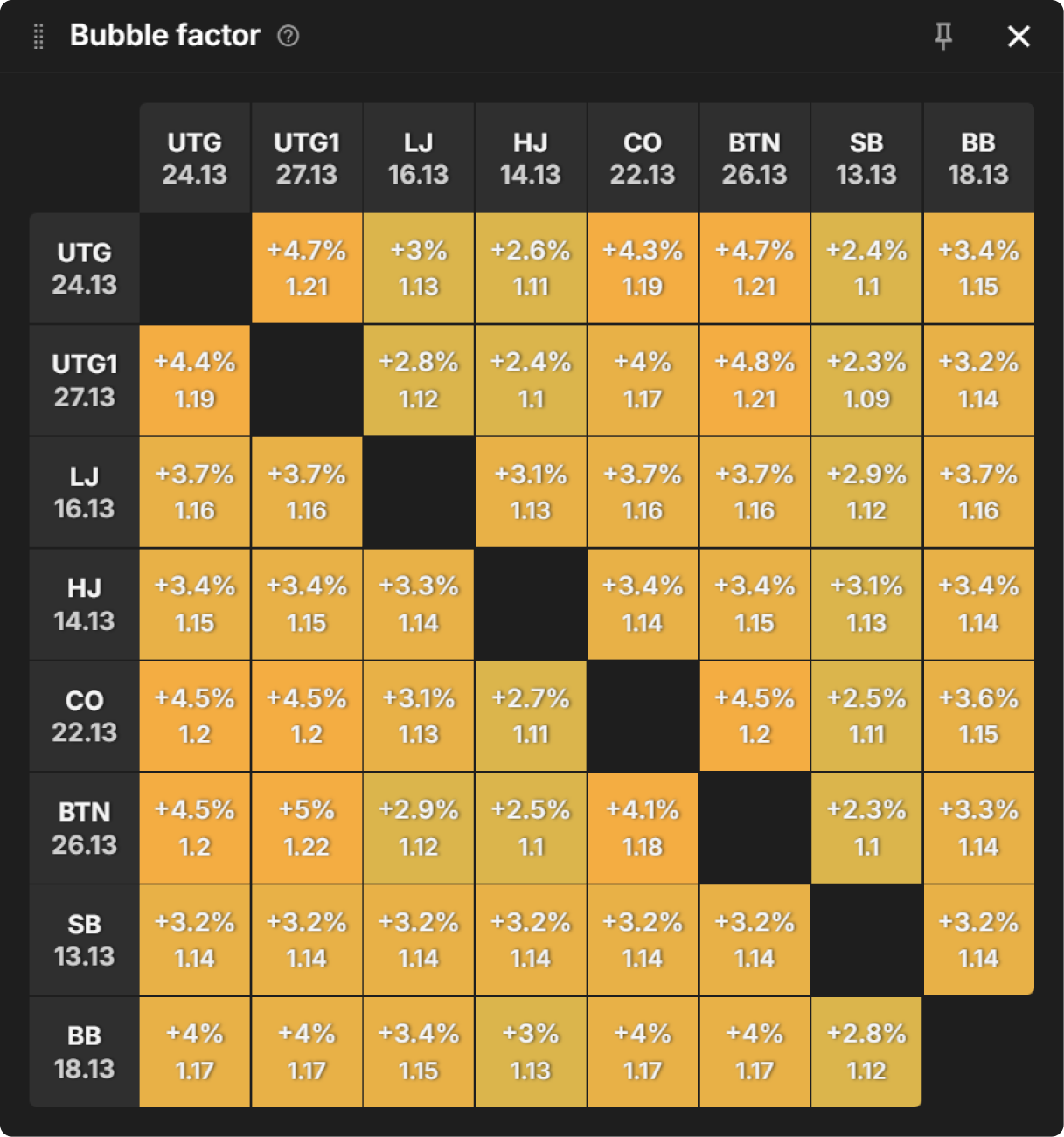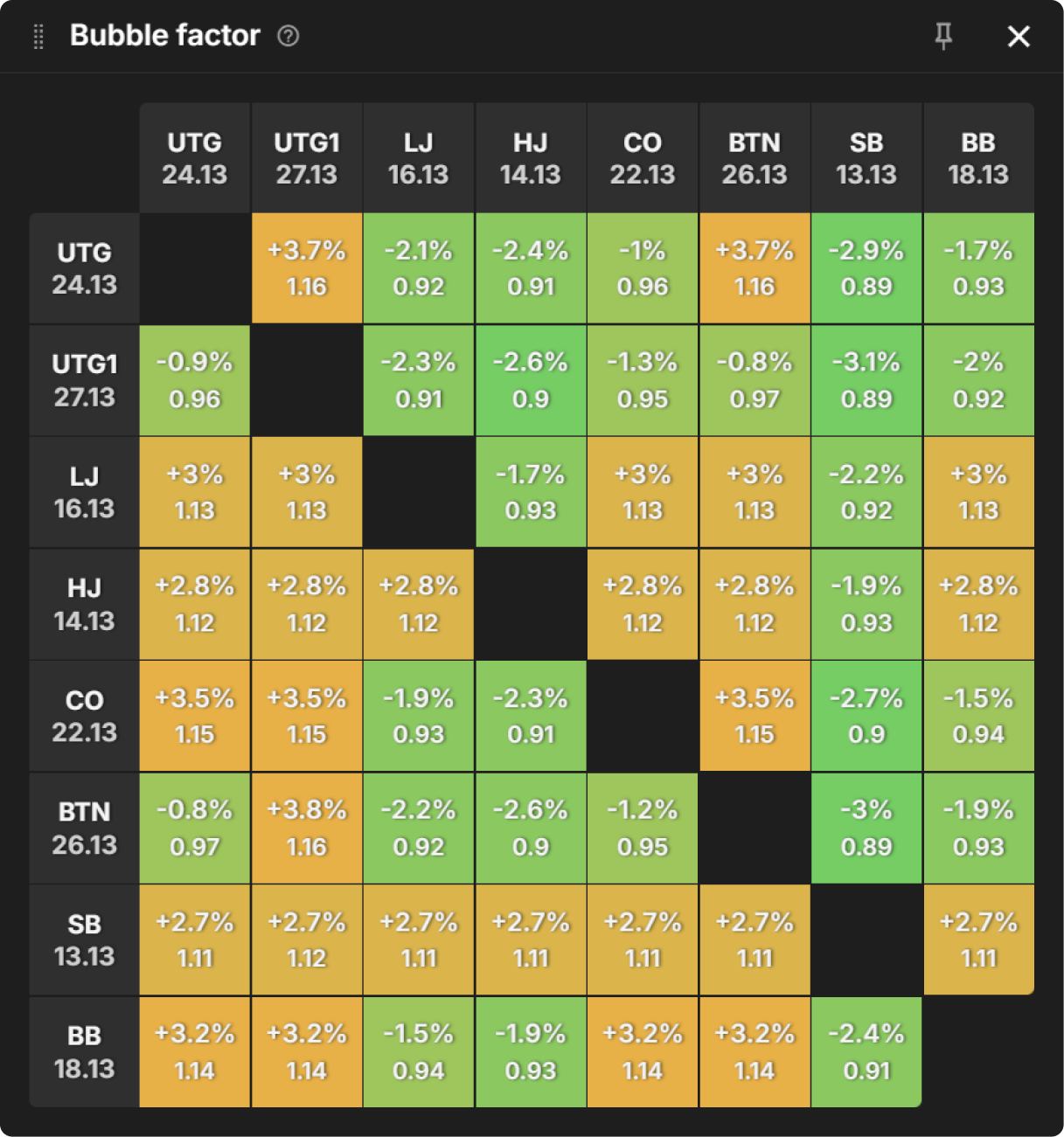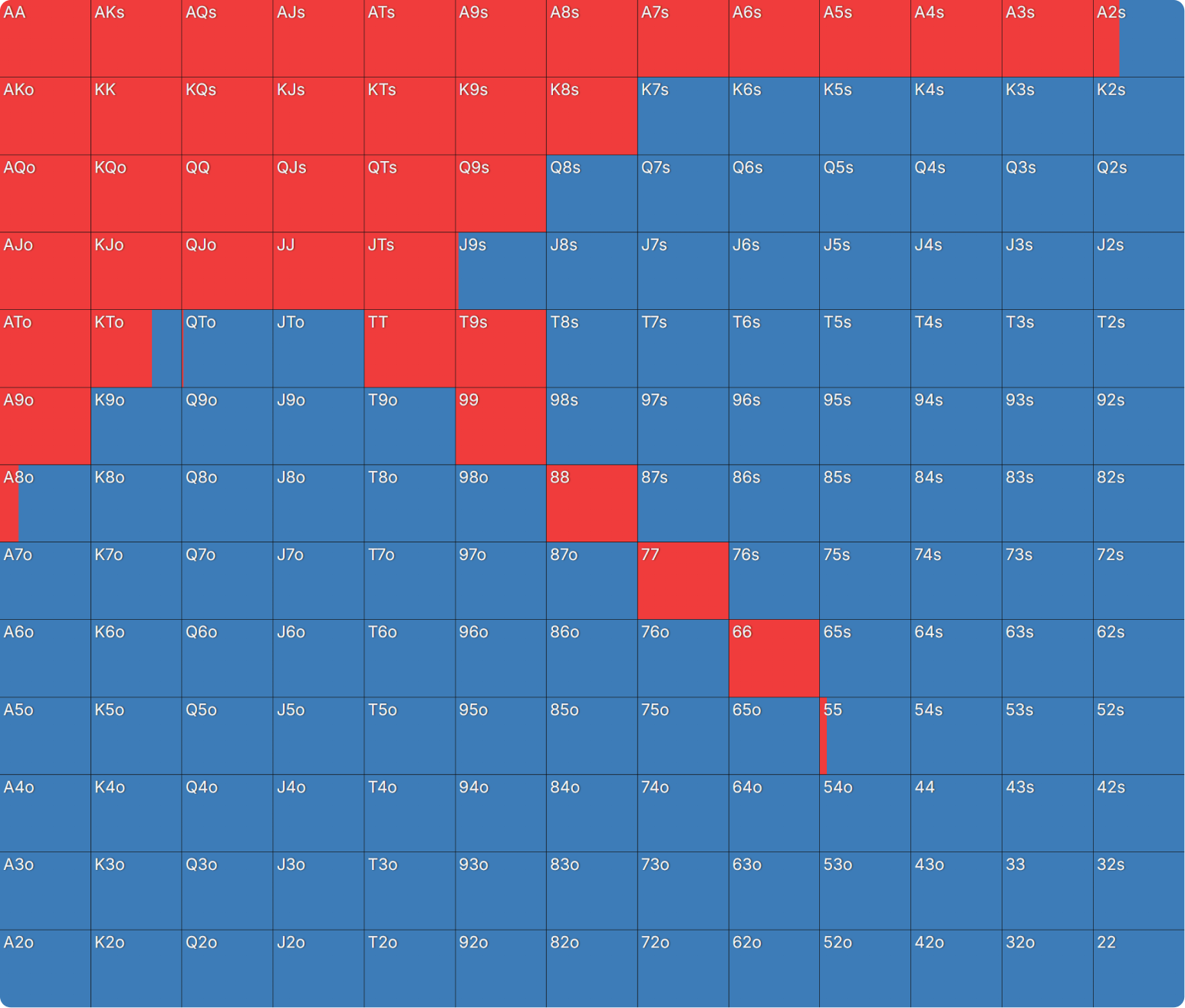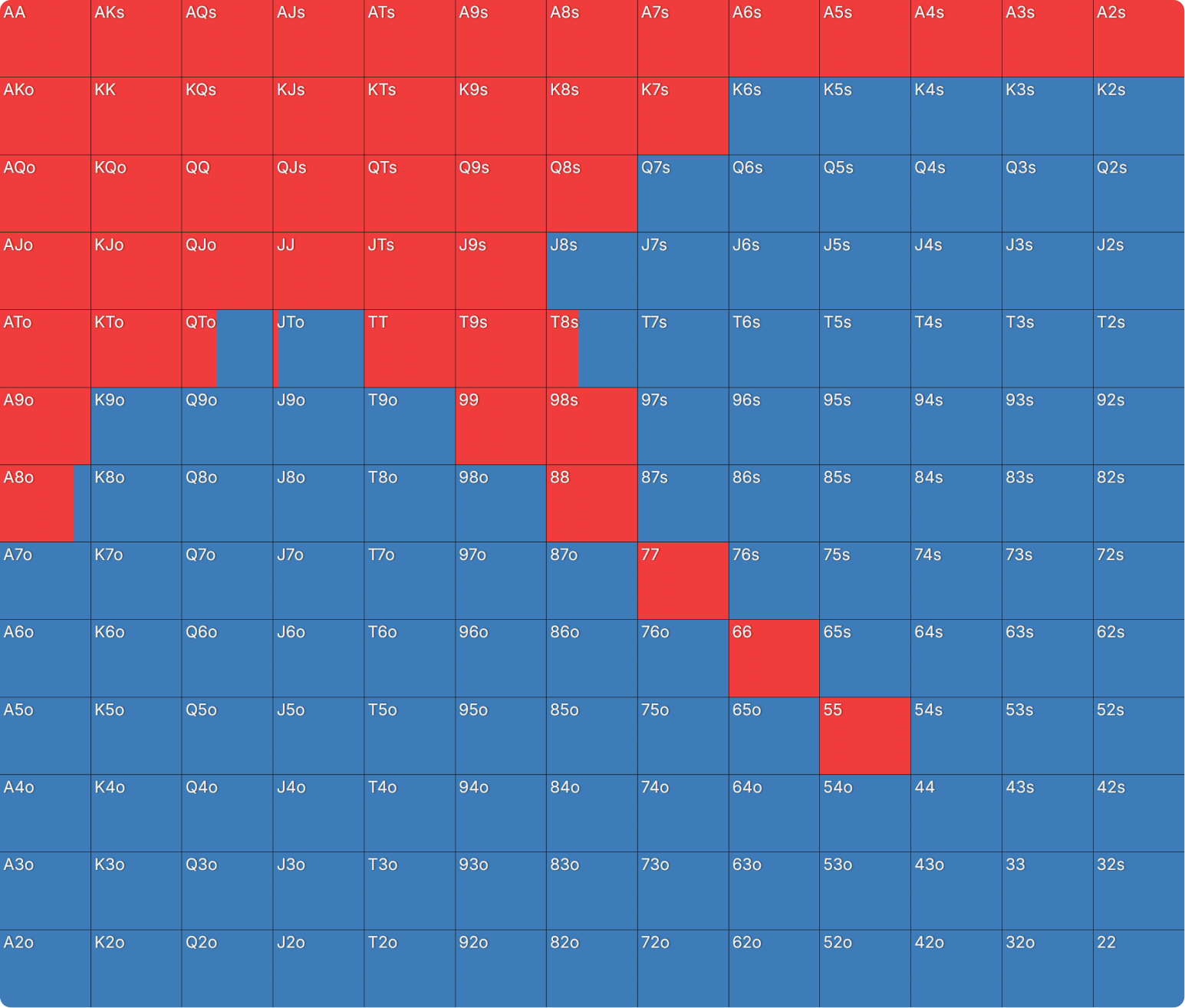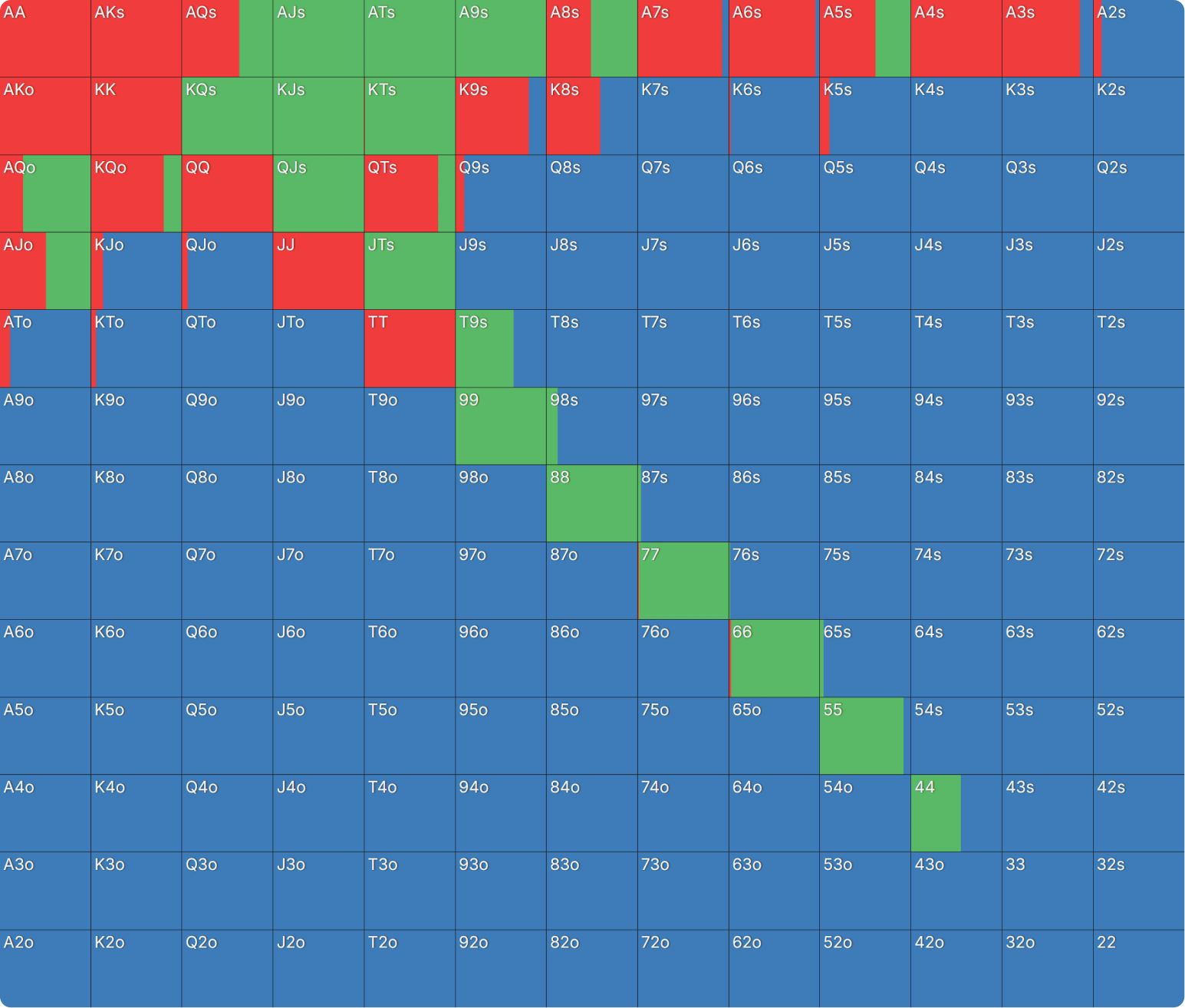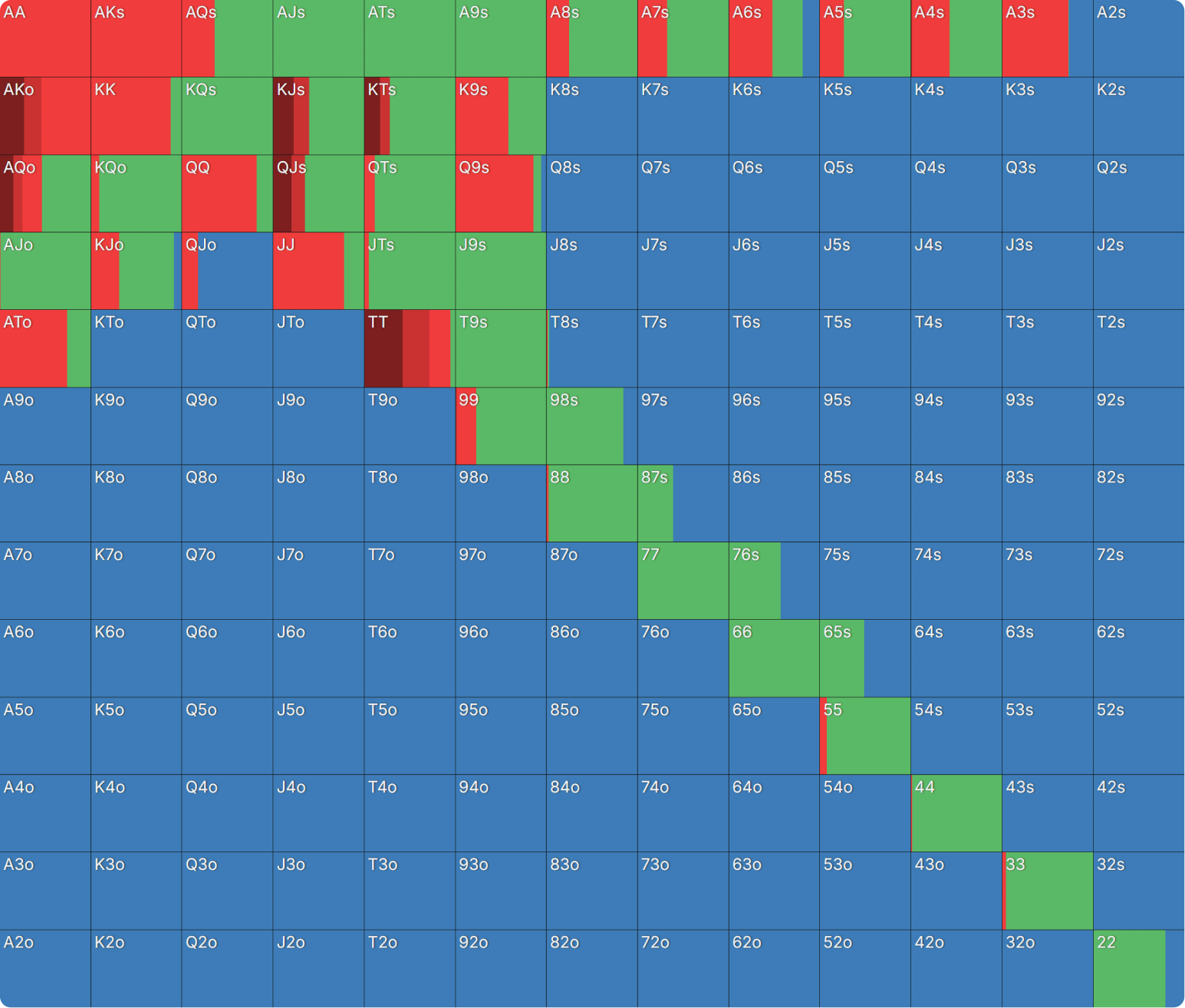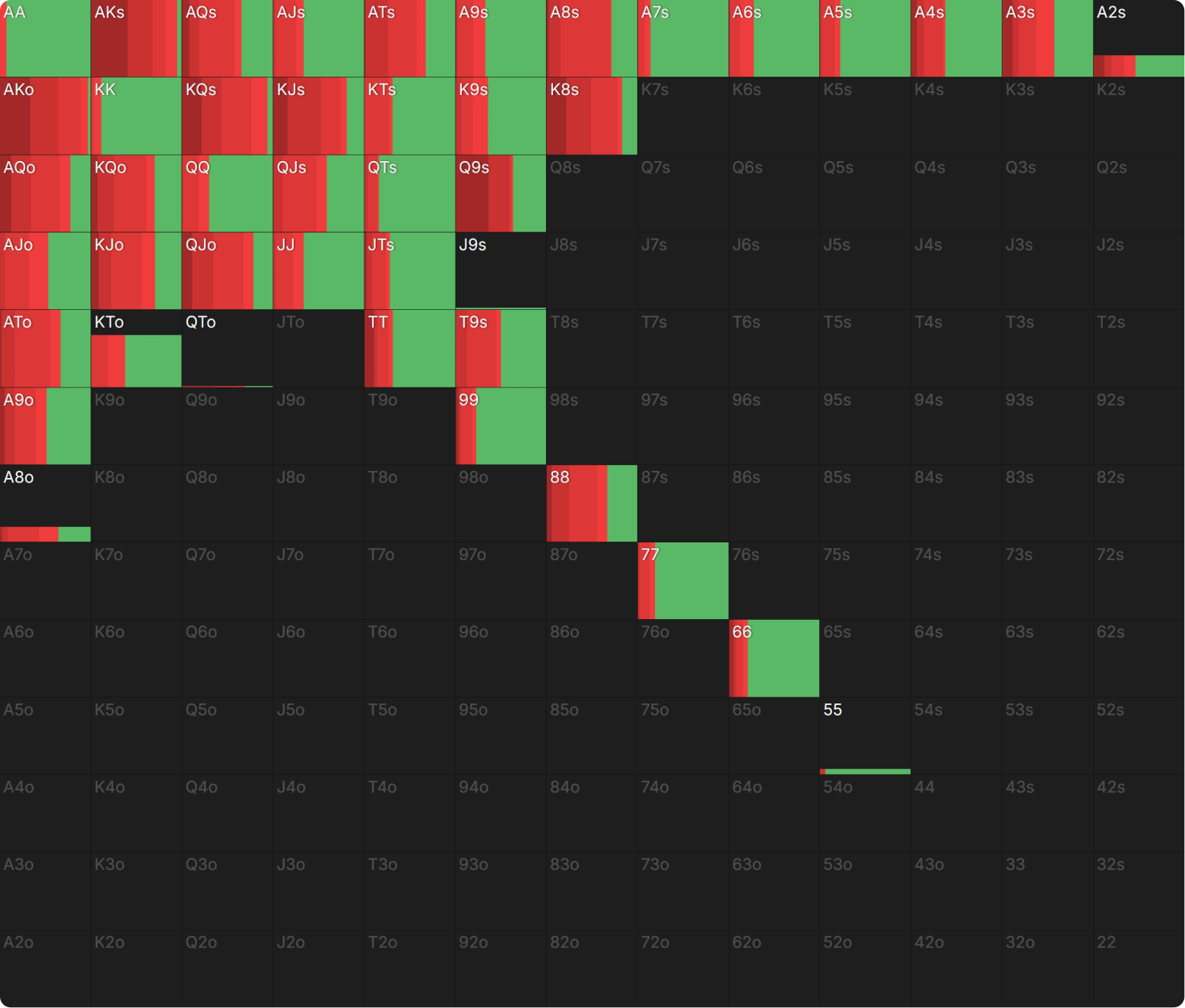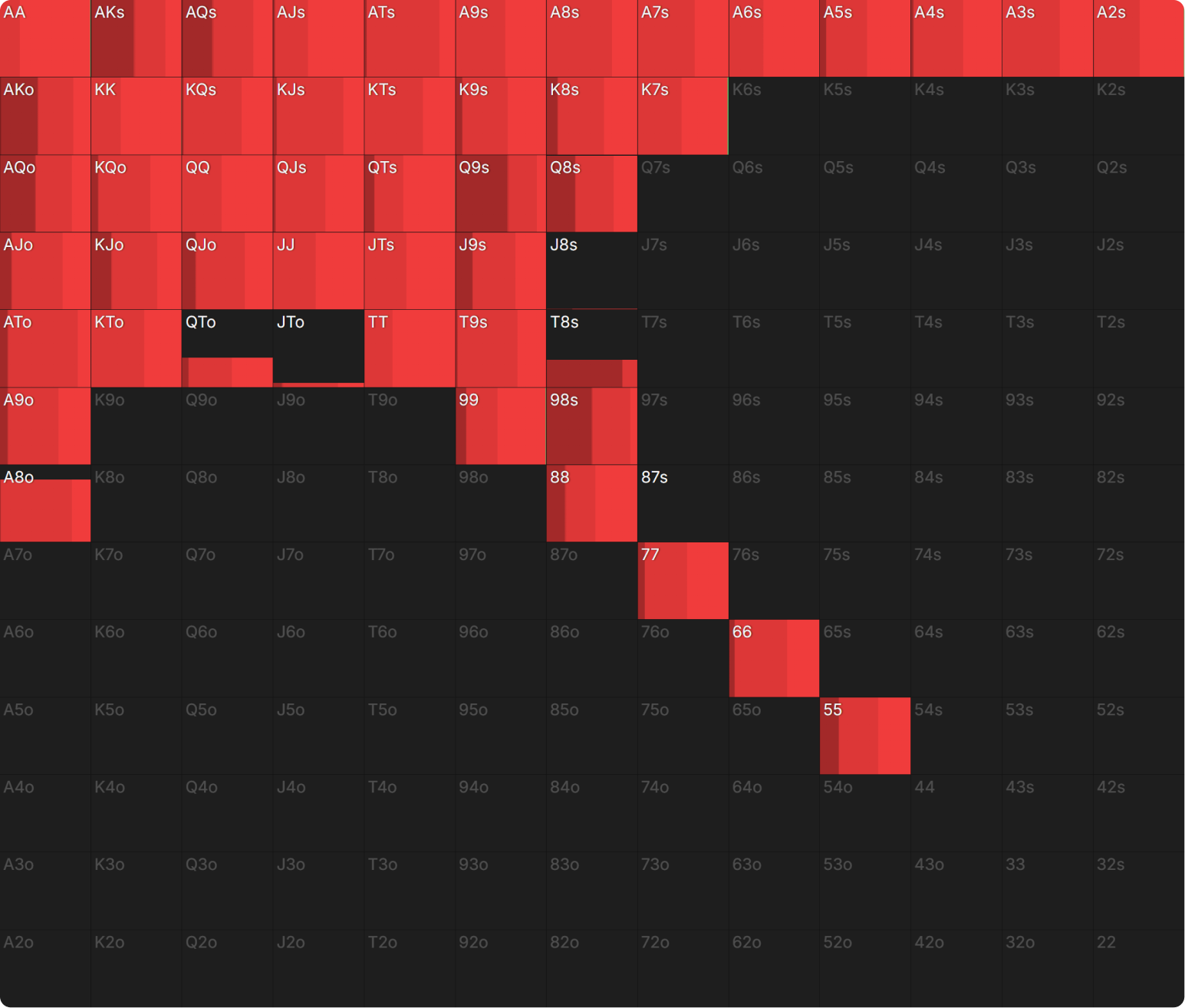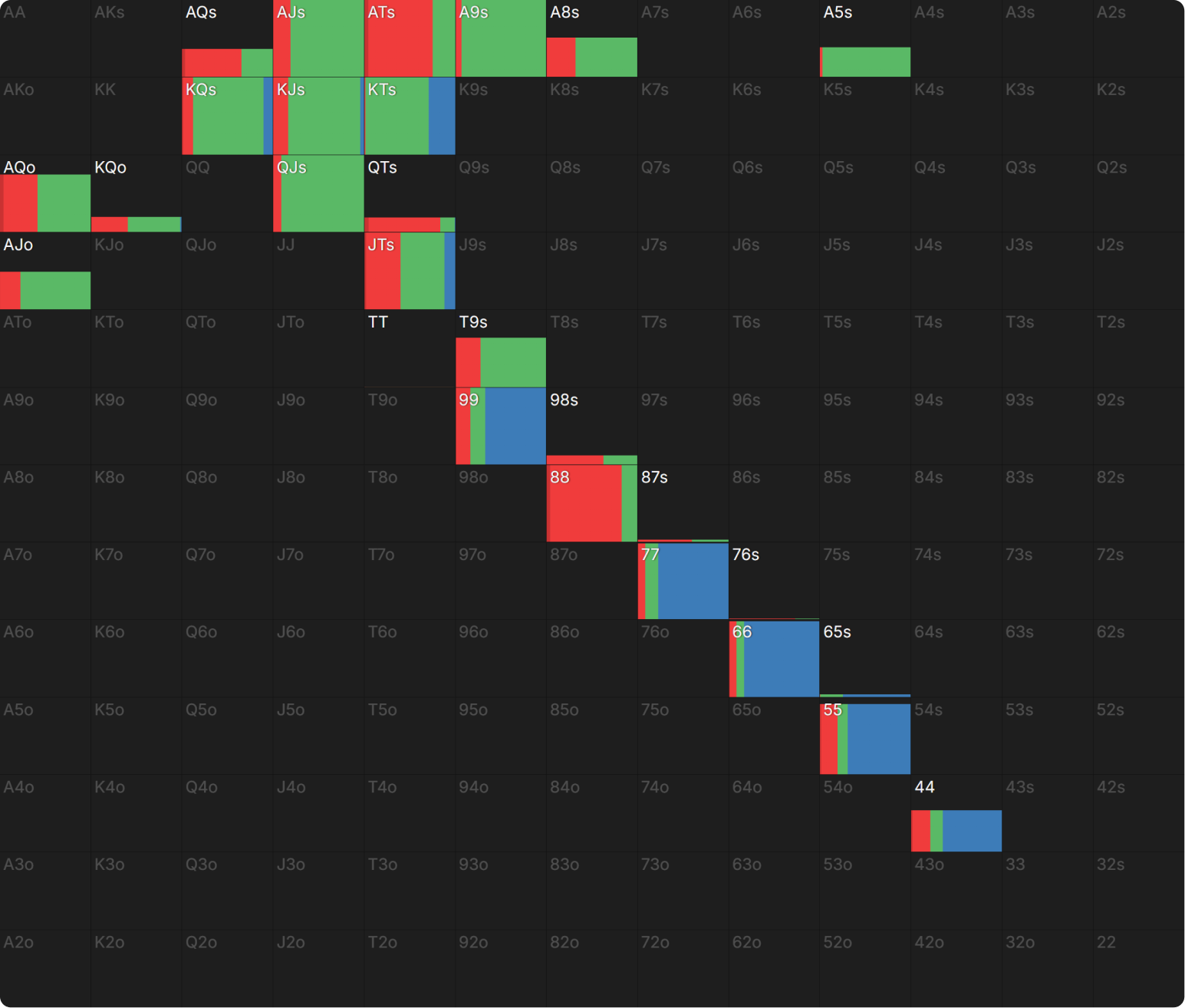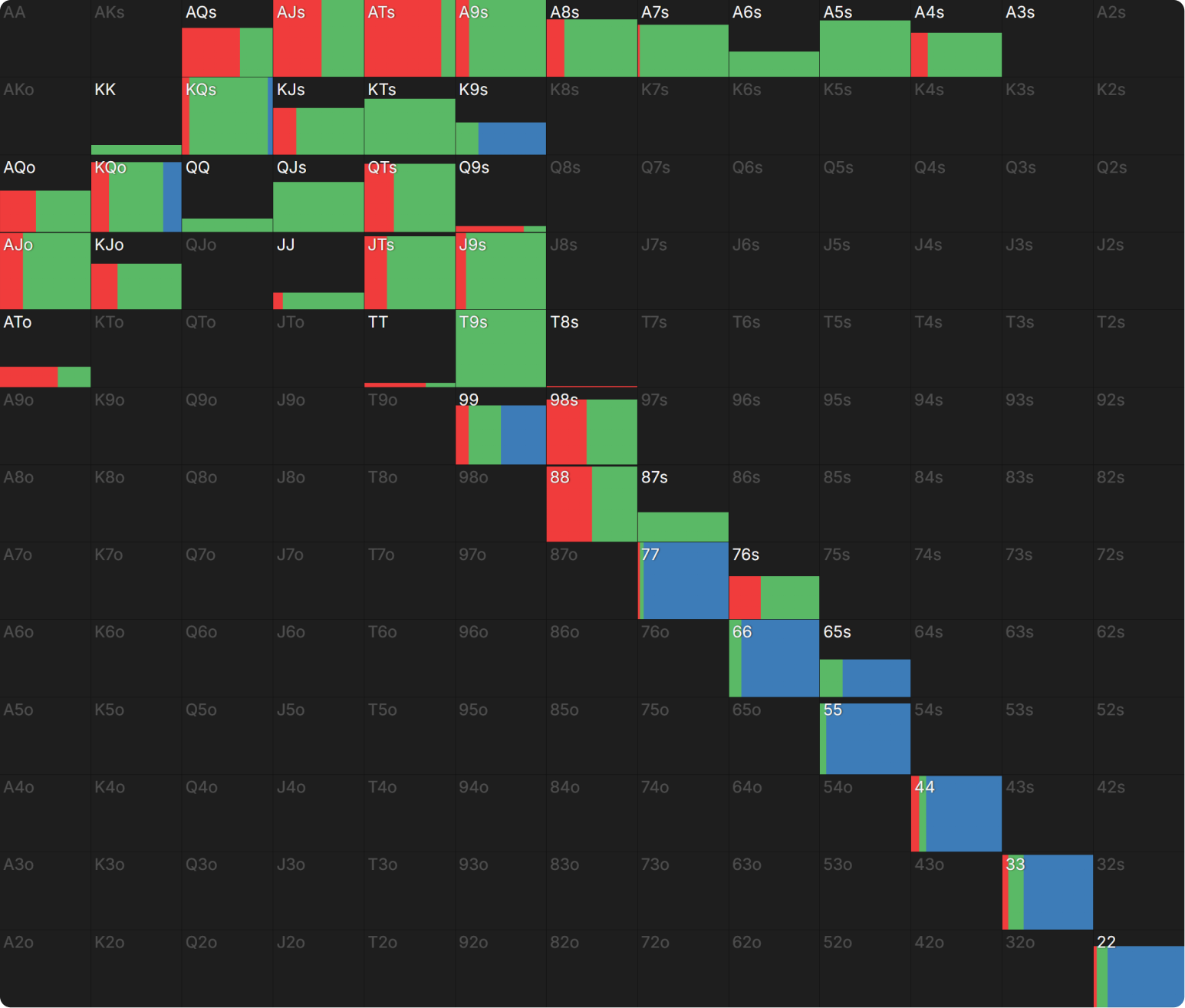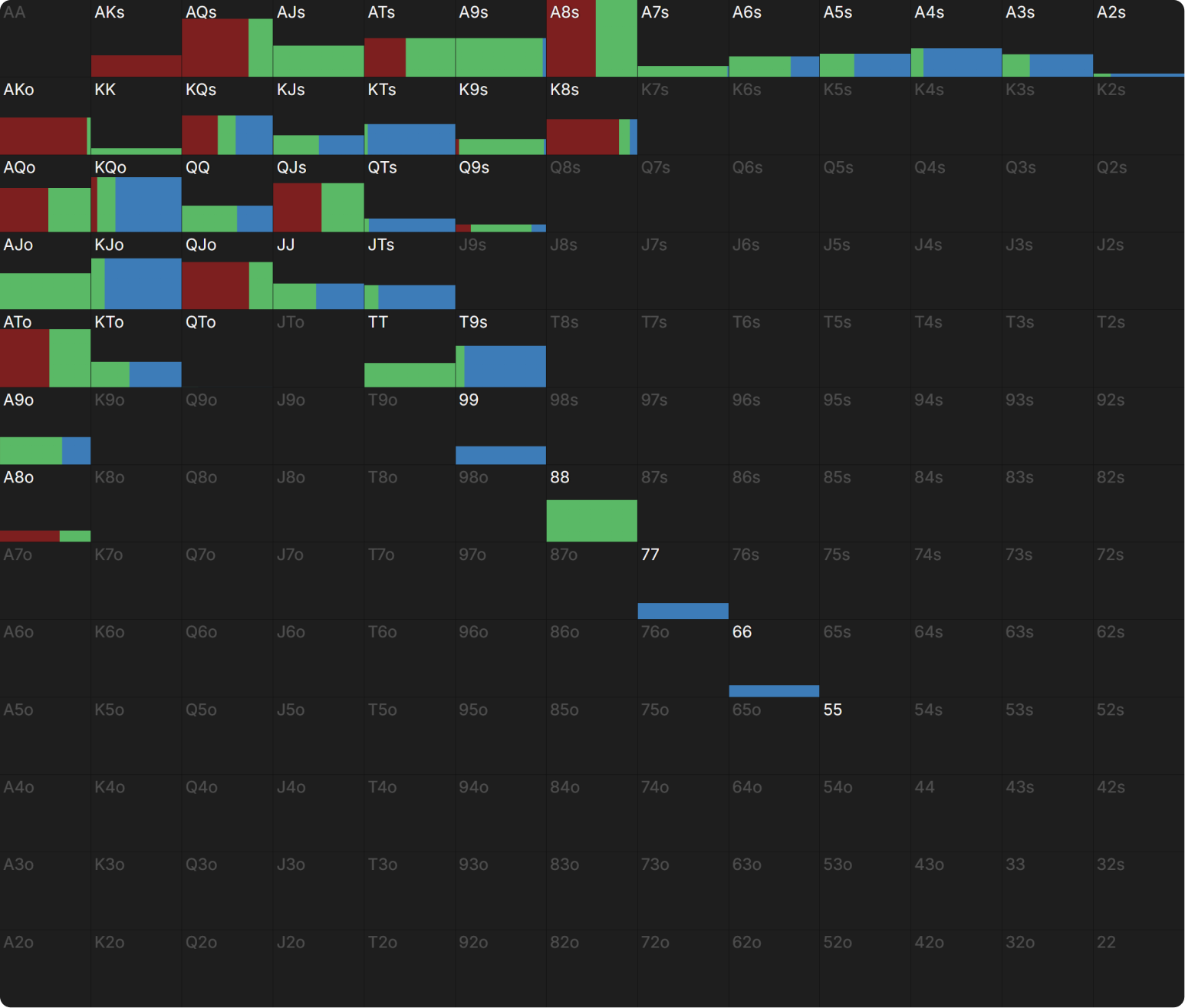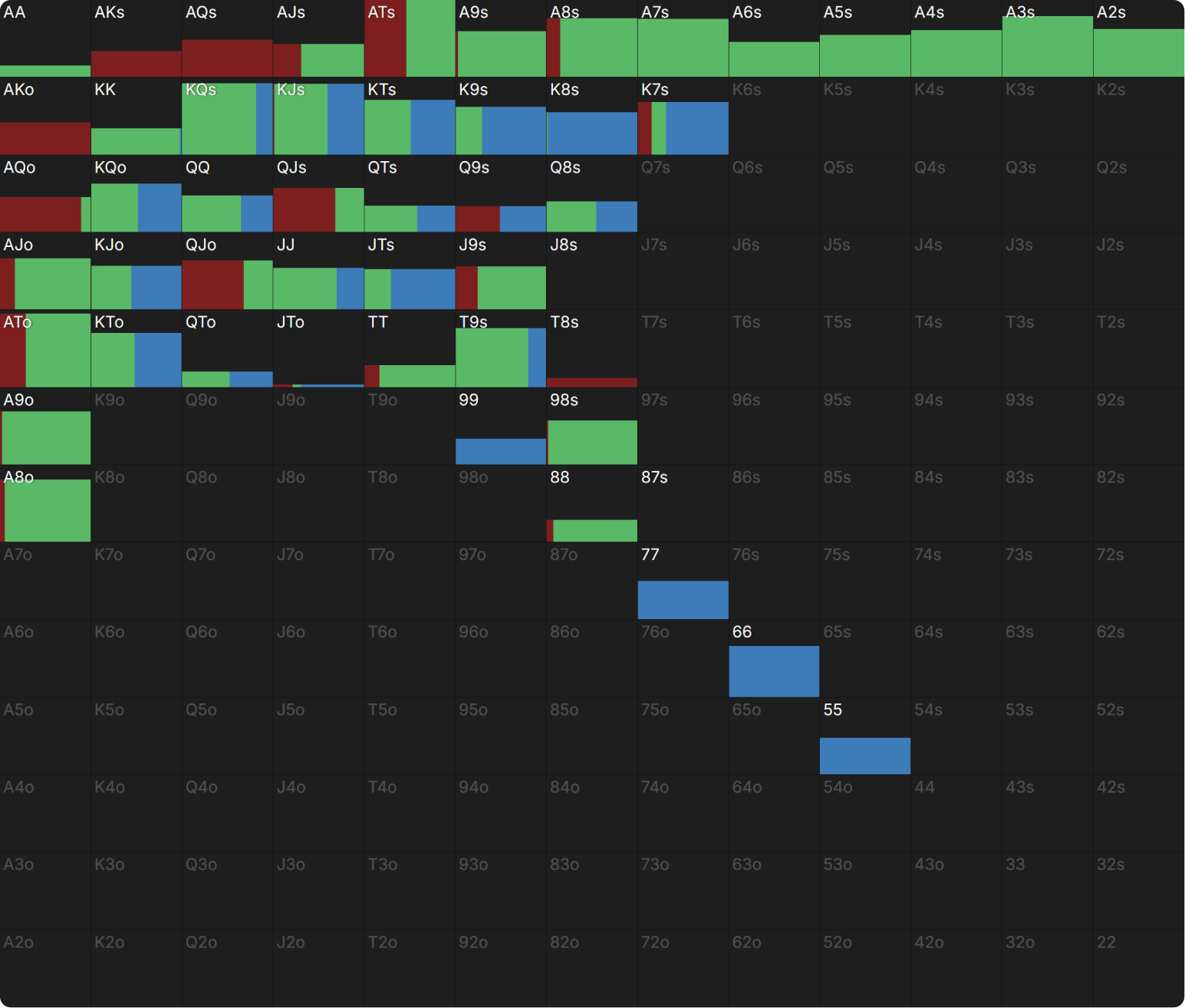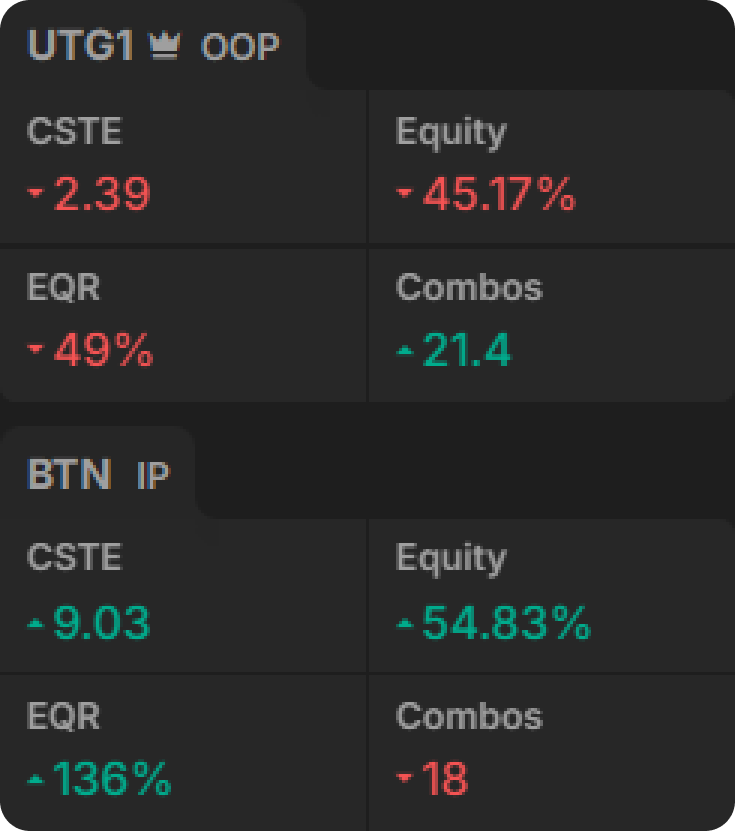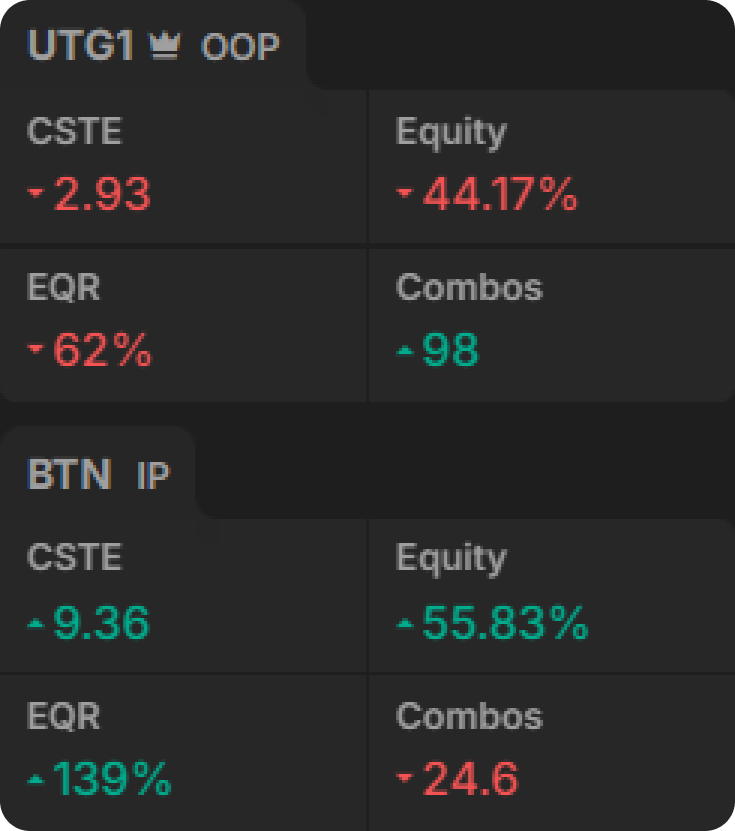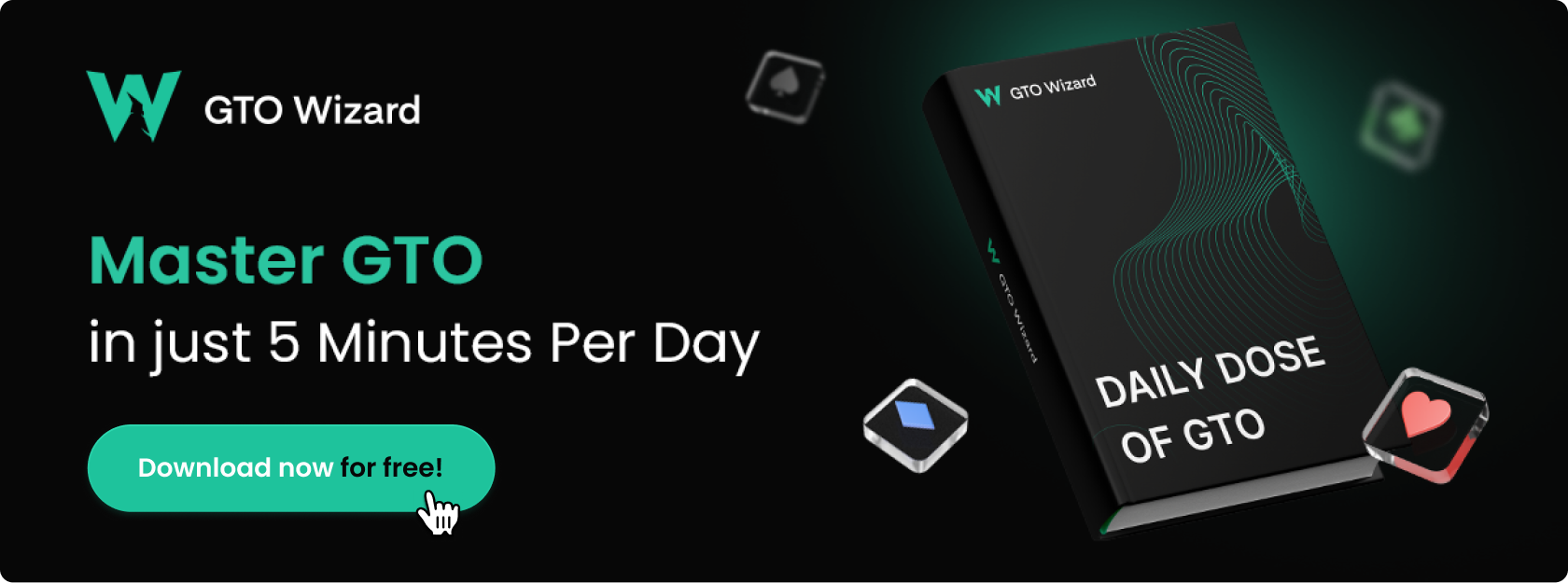How Do Bounties Impact Our Flop Ranges When Covering?
The previous articles in our PKO series showed how preflop ranges that are adjusted for bounties vary from our standard ICM ranges at various stack depths. As a next step in understanding how we adapt to PKOs, we will review how postflop play is impacted. In this article, we will study specific examples of how to play flops when bounties are available:
- As the covering and covered player
- And compare the differences at various stack depths and tournament stages
Deep Stacked @75% Field Left
We’ll begin by looking at a number of flop spots in a PKO setting at various stages of a tournament and observe how our strategies differ from a standard ICM solution. For consistency, we will look at the same flop of A♥T♥8♠ where CO has cold-called an open from a covering LJ. Note, the presented solutions are generated using GTO Wizard’s AI postflop solver, and are based on the PKO and Classic 1,000-player tournament structures respectively.
Below is an example where 75% of the field remains, with the following chip and bounty distribution:
These are the bubble factors and risk premiums for the Classic and PKO solutions respectively:
Preflop
LJ Opening Ranges
CO Response
Flop
Now, here are the flop strategies for A♥T♥8♠ in each game:
LJ C-Bet Strategy
CO Response vs Check
Observations
- There is very little difference in preflop ranges as there is <1% difference between risk premiums.
- The main takeaway from this flop example is that LJ, as the covering player, prefers to c-bet with larger sizing. In this hand, LJ drops their small bet (B20 and B33) frequencies by 31% in favor of using medium-to-large bets (B55 or B83). With a bounty available, LJ is more eager to move towards a lower SPR by the river to comfortably get CO all-in.
- In contrast, CO has a consistent strategy across both game formats, preferring to bet only 3% more often when checked to in classic ICM. With a high SPR, a less than 1% difference in the risk premiums between classic ICM and PKO, similar preflop ranges, and no bounty available, we should expect to see strategies for the covered player remain similar between game formats most of the time.
Mid Stacked @15.2% Field Left (Near Bubble)
In this example, we’ll look at a mid stack example where risk premiums are higher to see how a wider gap between risk premiums impacts our flop strategies. Below is an example near the bubble with an average stack depth of 40bb where the big stack is now the opener and in position.
The risk landscape for each format looks as follows:
Preflop
UTG Opening Range
BB Response
Flop
In both instances, BB checks their full range, so we can jump ahead to UTG’s c-bet flop strategy and BB responses:
UTG C-Bet Strategy
BB Response to B55
Observations
- Looking at risk premiums, there is a 5.8% RP gap for UTG and a 4.6% RP gap for BB between the two game types. In contrast, when we look at CO and BTN playing one another, there is an 8.1% RP gap for the covering player and a 4.6% gap for the covered player. Based on this we can see that once a player is covered, the difference in RPs between classic and PKO solutions remains the same regardless of the stack size of the covering opponent.
- On the flop, we see UTG, who’s covering, c-bet to much larger sizes with the hand classes shown below. With BB’s bounty available, UTG is incentivized to build a pot early to force BB all-in on later streets. This is mathematically expressed as a negative risk premium in the PKO environment due to the bounty power in the hand outweighing the bubble factor.
The interesting thing here is that BB, who’s covered, responds in kind with similar calling and raising frequencies, but uses larger raise sizes more frequently in the PKO solution. These larger sizes are primarily from BB’s stronger Ace-x, as shown in the charts below. This is because, in the PKO solution, UTG uses larger bets more frequently with their stronger aces. So, when UTG uses B55 in a PKO, BB can raise more frequently with their best Ace-x against UTG’s relatively capped range, knowing they probably have the best hand on the flop.
Shallow Stacked @5% Field Left
Finally, let’s look at an example of a tournament that progressed deep into the money with 5% of the field remaining. In this example, the average stack is only 20bb and the stack distribution is close across players:
Starting our analysis off again with a view on the risk premiums for each format:
Preflop
UTG+1 Opening Ranges
BTN Response
Flop
UTG+1 C-Bet Strategy
BTN Response to B32
UTG+1 Response to R33
Observations
- BTN’s response is similar in both solutions but includes small non-all-in (and almost all-in) frequencies. We can assume this is a function of BTN’s 0.8% lower RP in the PKO.
- On the flop, we see the biggest gap in strategies so far, with UTG+1 going from betting 54% of their range in classic ICM to 100% of it in the PKO example. Let’s build the rationale for why we might see discrepancies at each sizing:
•
Small sizing (B20/B32) – If we look at BTN’s response to a small bet, they fold at similar frequencies in both solutions. But in the classic ICM node, they raise 6% more often. In a PKO, the covering player will be incentivized to continue wider. Because of this difference between UTG+1’s calling range, BTN’s raising range becomes more focused on value versus bluffs. An indicator of this can be found in the panel with each player’s range metrics (displayed below) when BTN raises 33% pot over UTG’s 32% c-bet, with BTN having a full percentage more equity after raising:
Knowing they aren’t getting raised as often, UTG+1 can use this small sizing as an efficient way to get folds with less risk of having to fold to a raise.
•
Medium sizing (B55) vs Large sizing (B83) – We see the B55 size used at a 13% higher frequency in the classic ICM example, whereas UTG+1 prefers using B83 in the PKO example for more of their range. As with our previous examples, UTG+1 wants to build a pot early as the covering player, moving towards an SPR of 1 on the turn.
- As mentioned earlier, BB prefers to raise less often against 33% pot c-bets in the PKO example due to their decreased fold equity. We can also see that in the PKO, UTG+1 will shove 7% more often over a raise, so BB has to account for this when constructing their raising range.
Summary
In our previous articles, we discussed how we adjusted our preflop ranges in a PKO. Once that foundation is put in place, we can start building our understanding of the differences in PKO postflop play. While this article only covered one flop texture, we can still pull a few key learnings from the trends we saw across stack depths and relative stack sizes:
- Bet bigger when covering in a PKO – We saw across solutions that the covering player was always more attracted to c-betting for larger sizes in PKOs. When bounties are available, we should be more interested in moving our opponent closer to all-in.
- Bluff less often when covered at lower SPRs – Since covering players are incentivized to call raises wider in PKOs, we want to focus more on raising for value, given that we have less fold equity when our bounty is available.
- Consider your opponent’s c-bet sizing when choosing an action – If a covering player in a PKO uses a smaller bet sizing where you would expect to see large sizes with the stronger part of their range, such as the ranges we saw in the middle stack example, you can attack their weaker range. This is the upside of the previous point, as the value part of your raising range will get more calls, meaning you will get paid off more often with the top of your range.

Author
JonnyLaw
John Lawford AKA “JonnyLaw” is a mid stakes online MTT regular with a passion for the Progressive Knockout format.
Wizards, you don’t want to miss out on ‘Daily Dose of GTO,’ it’s the most valuable freeroll of the year!
We Are Hiring
We are looking for remarkable individuals to join us in our quest to build the next-generation poker training ecosystem. If you are passionate, dedicated, and driven to excel, we want to hear from you. Join us in redefining how poker is being studied.


